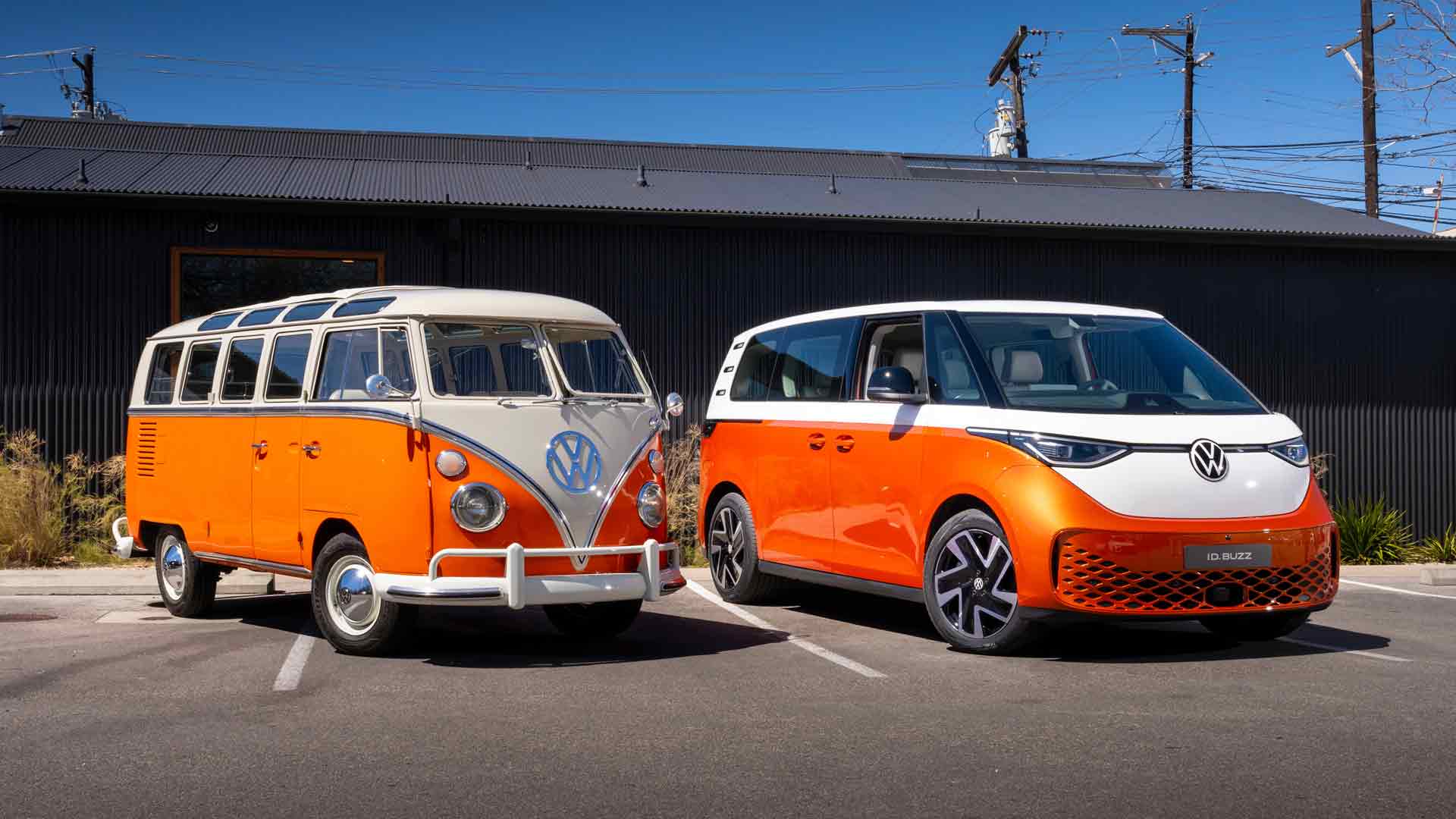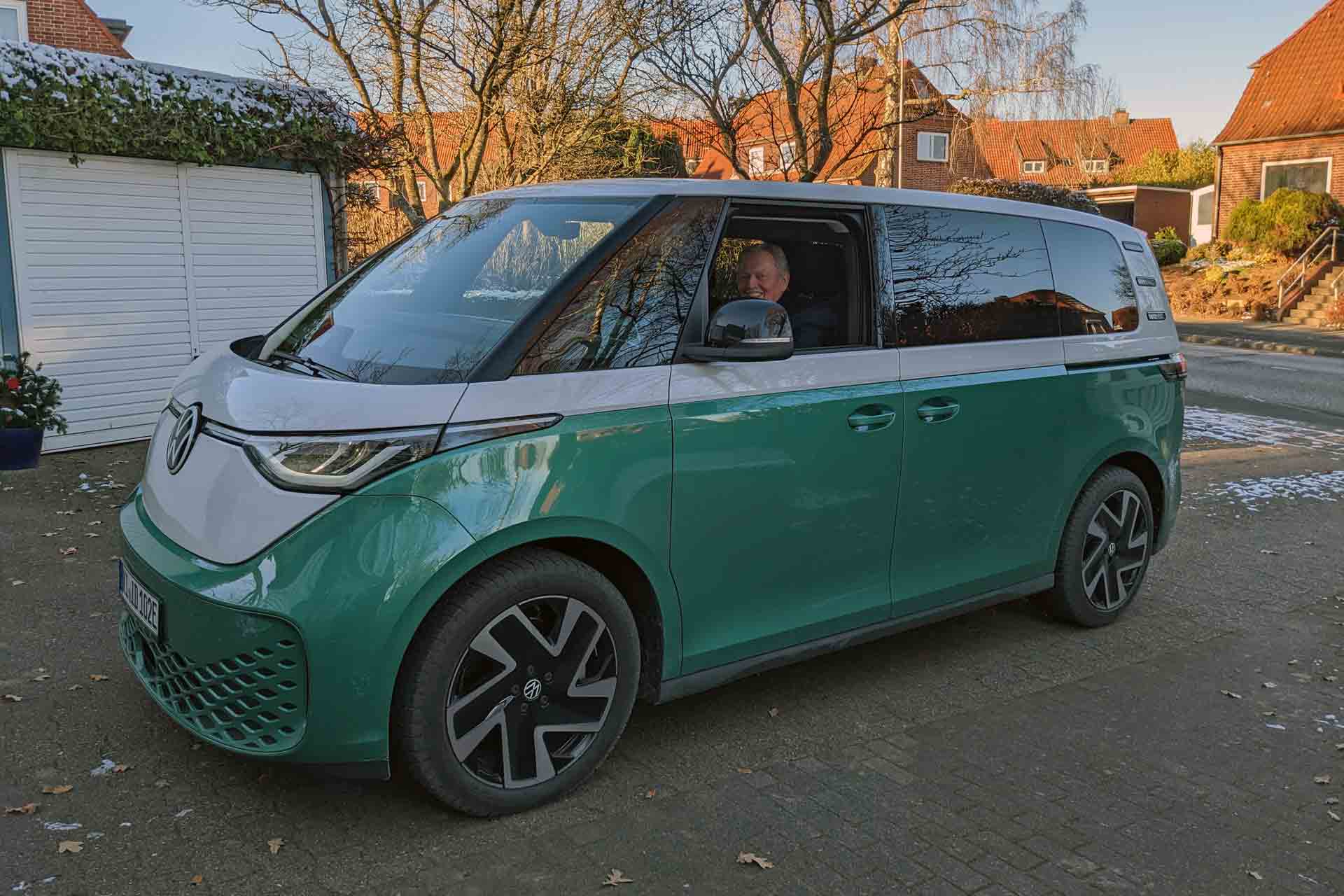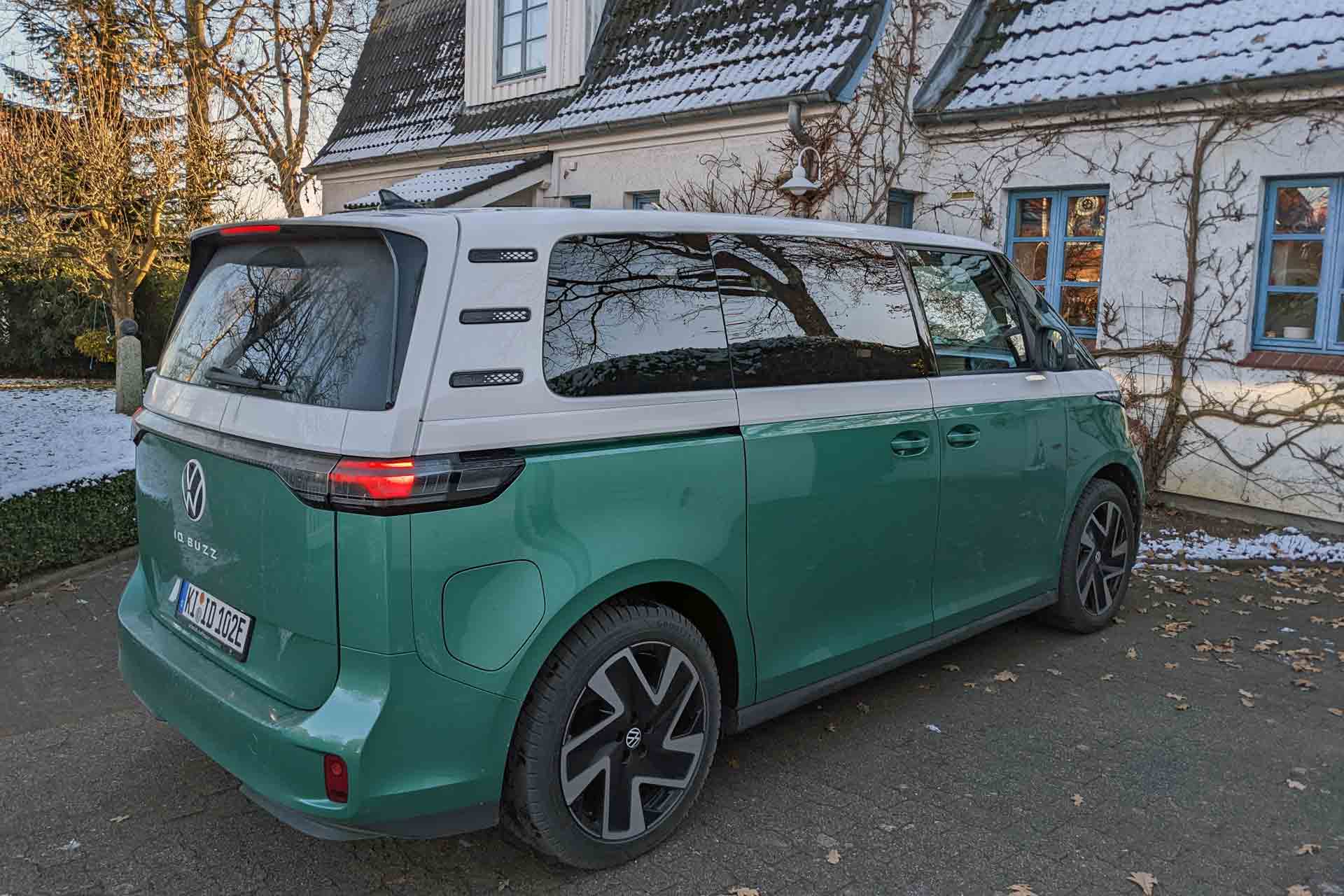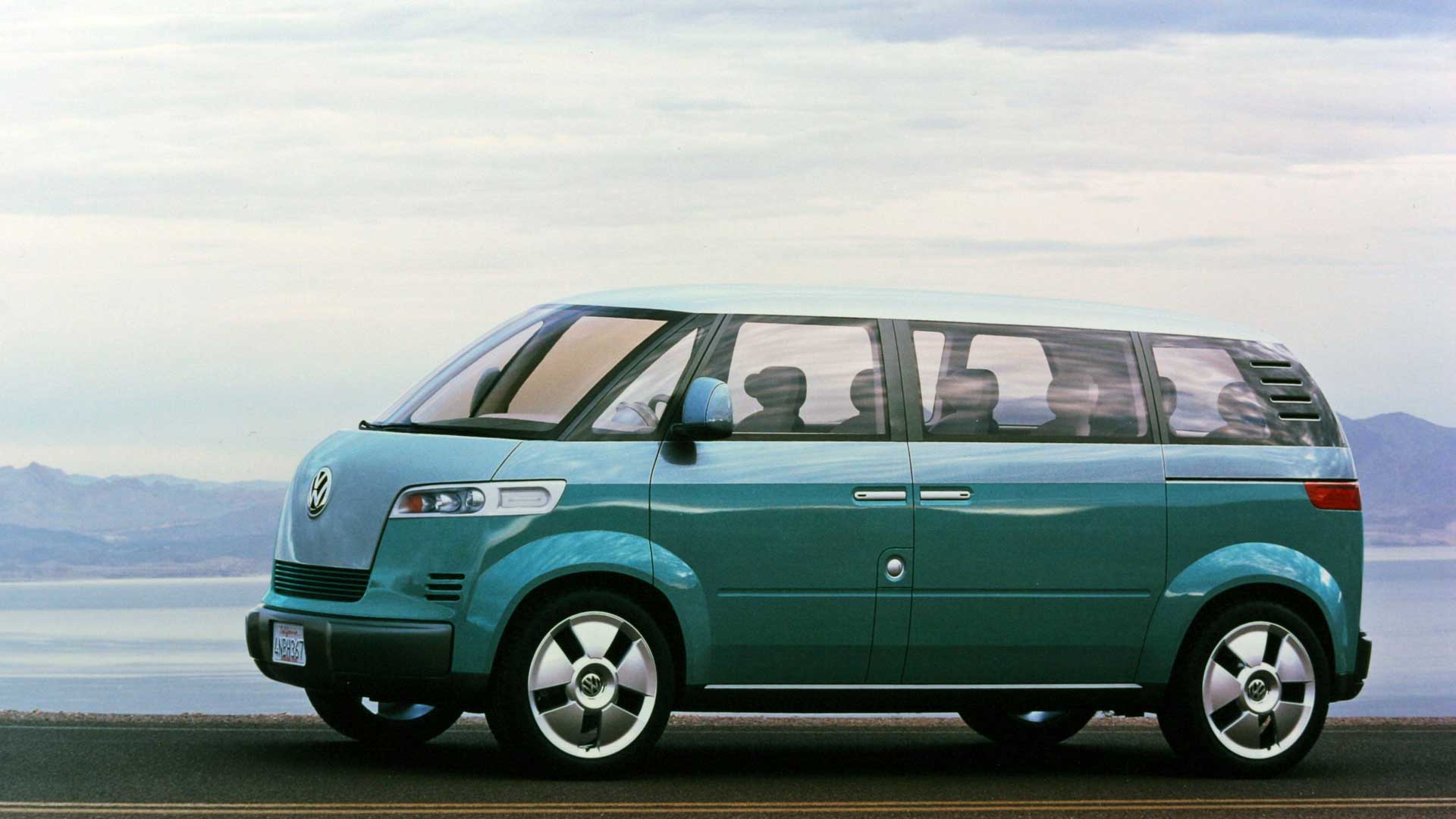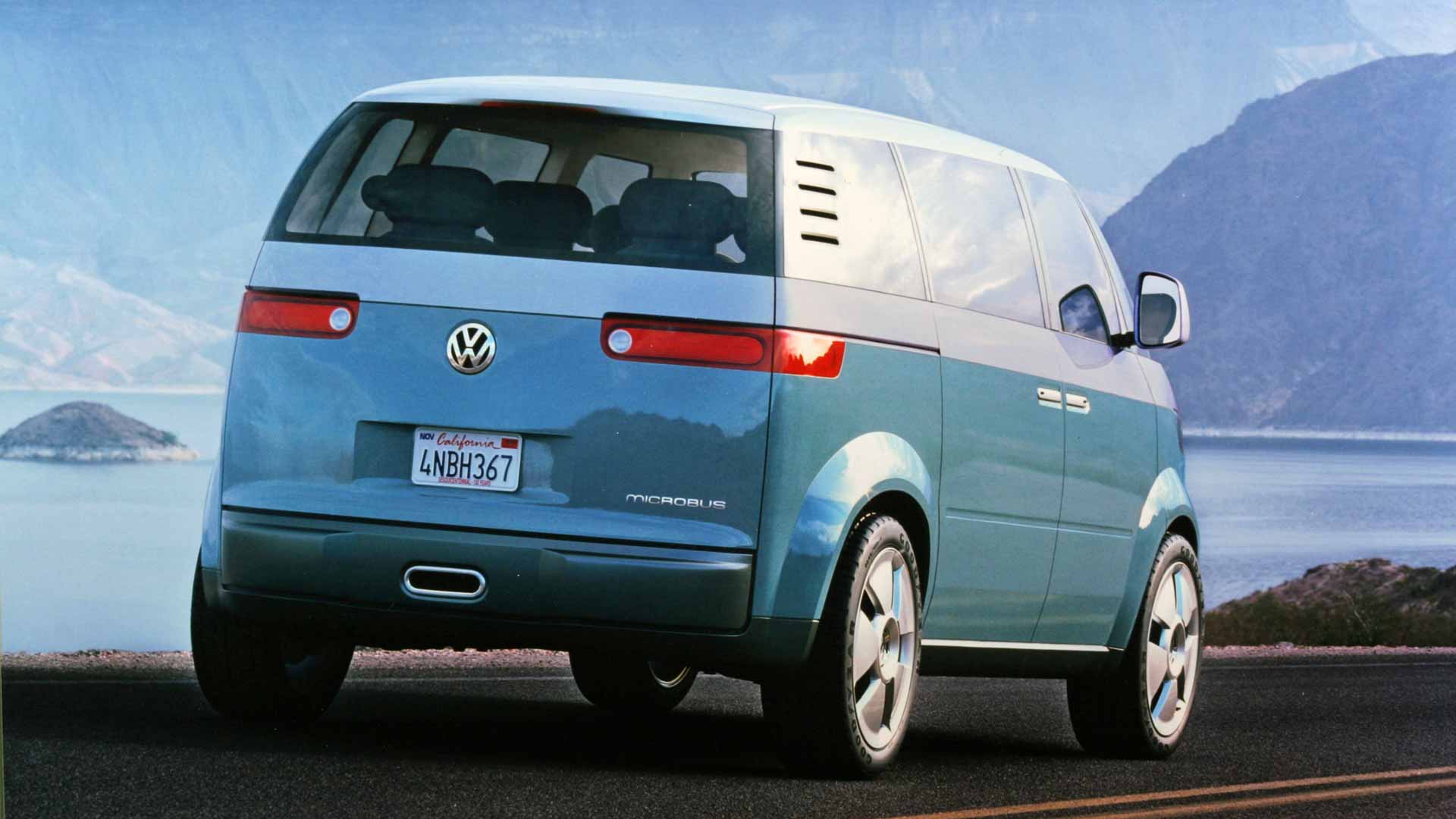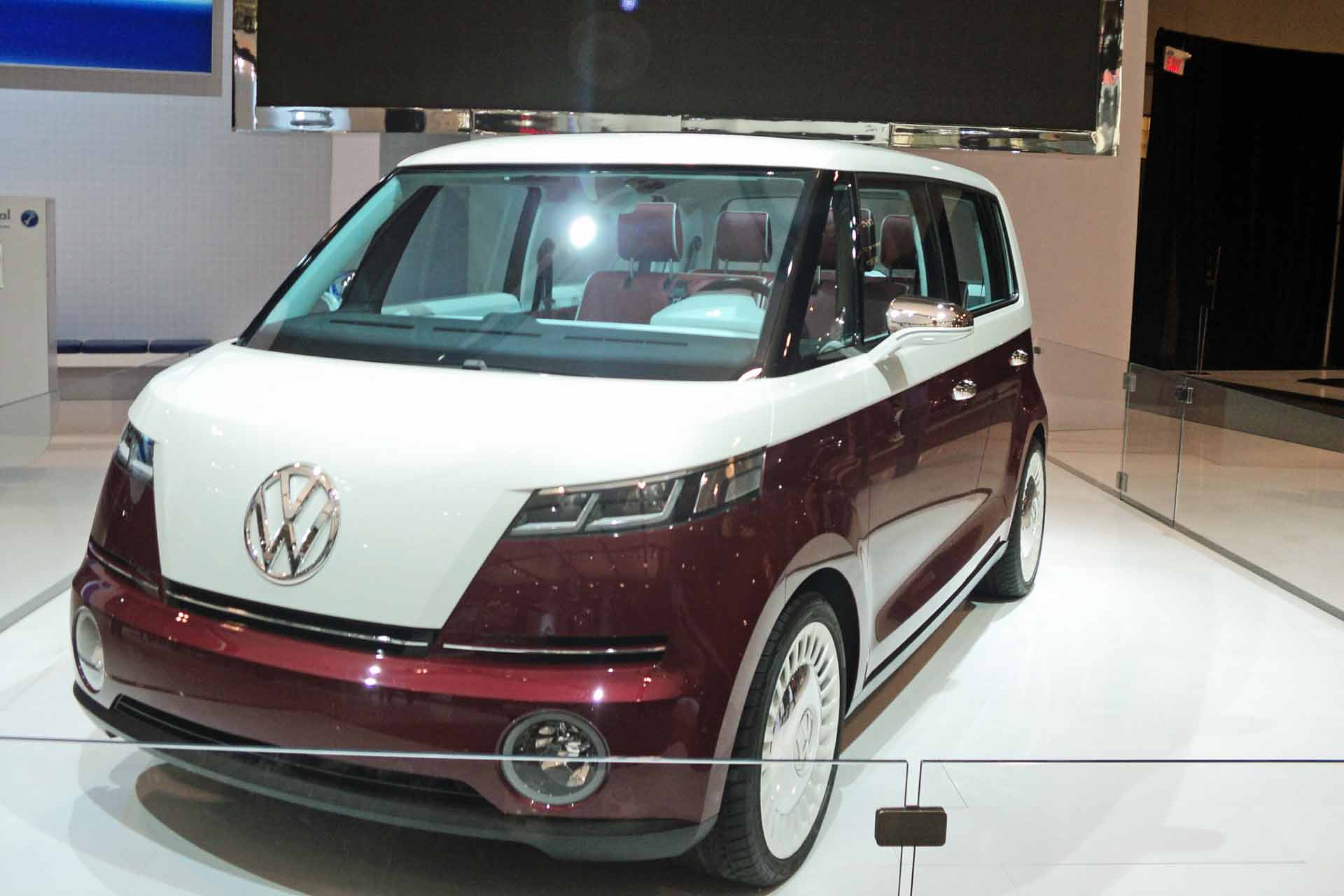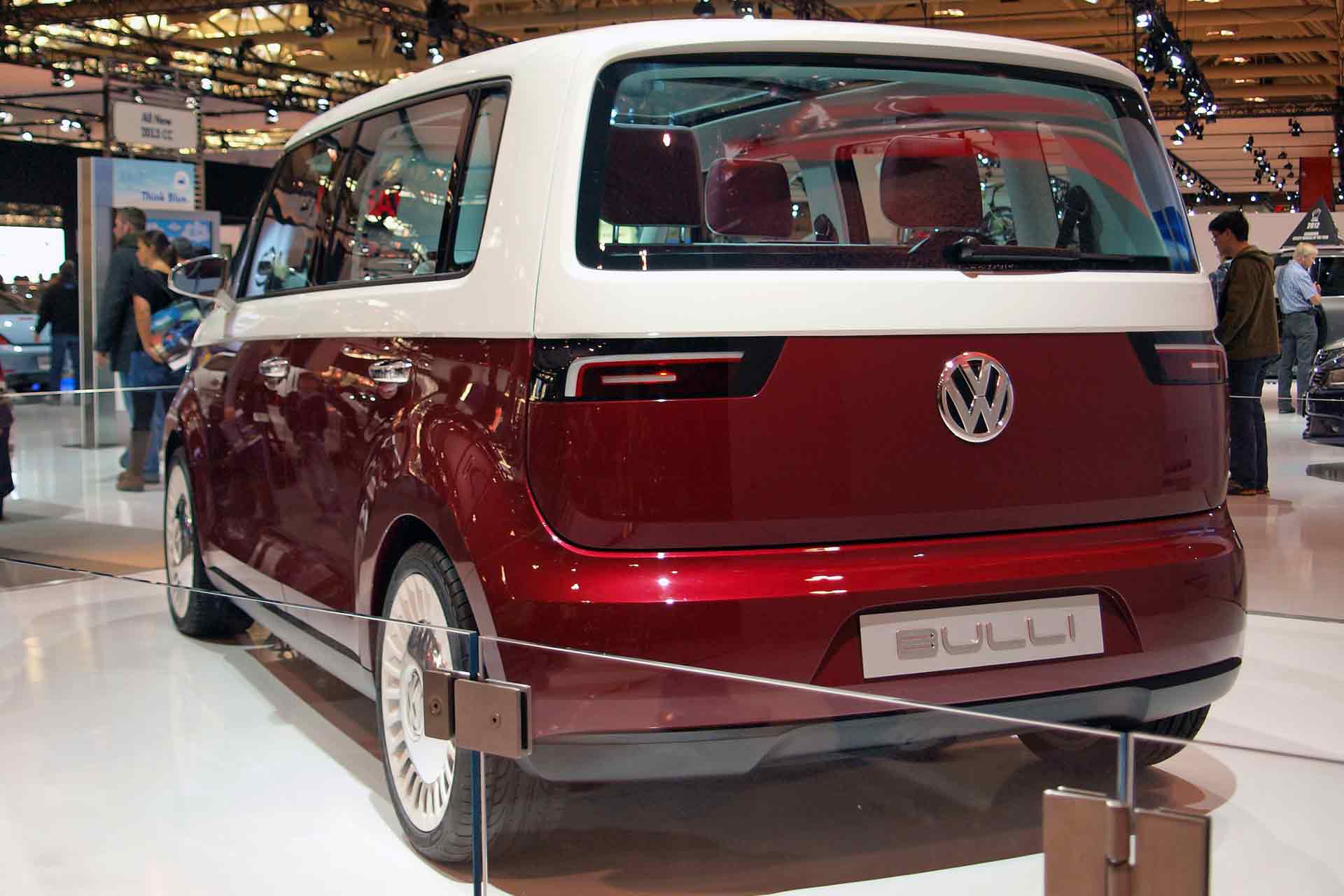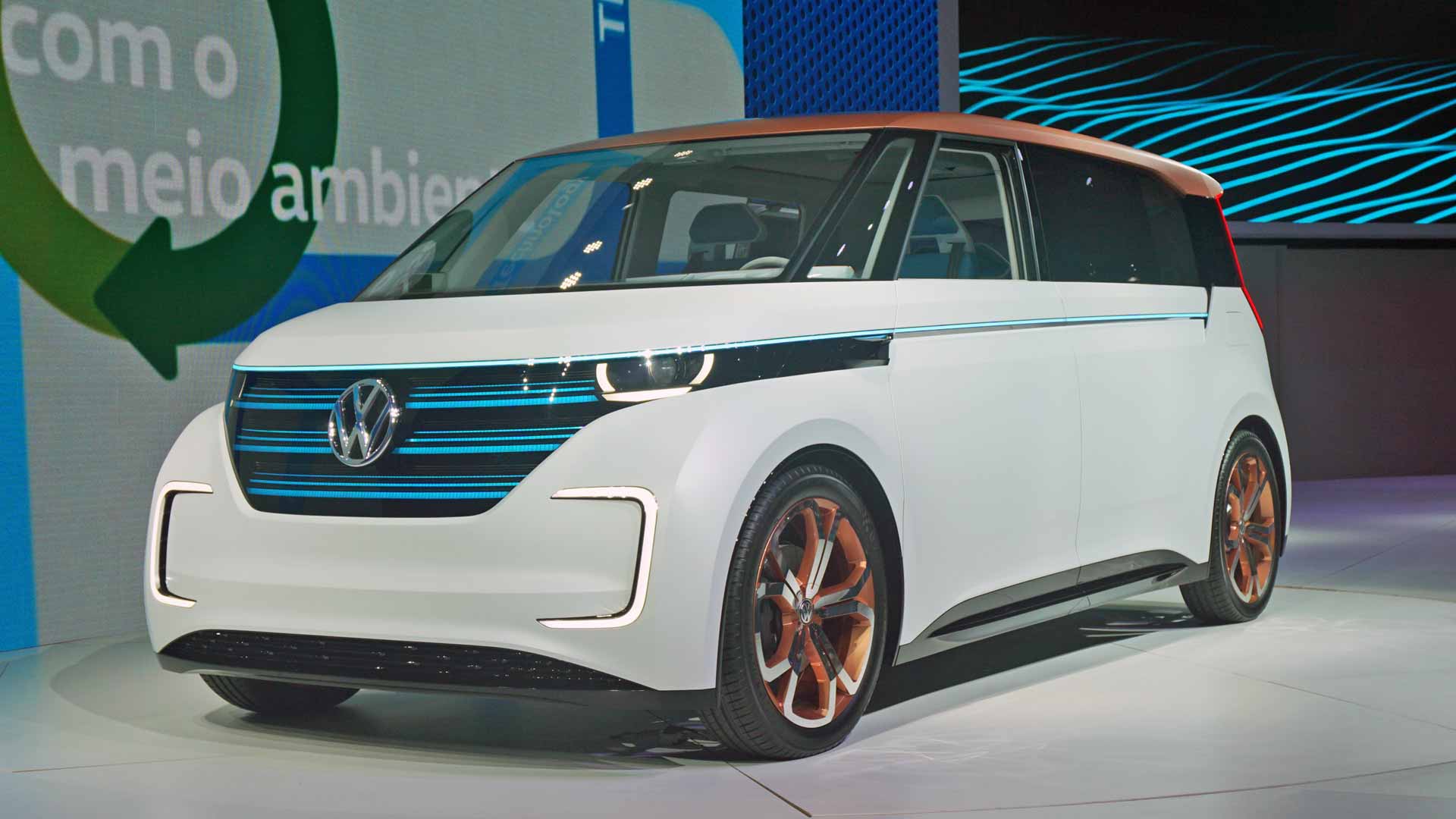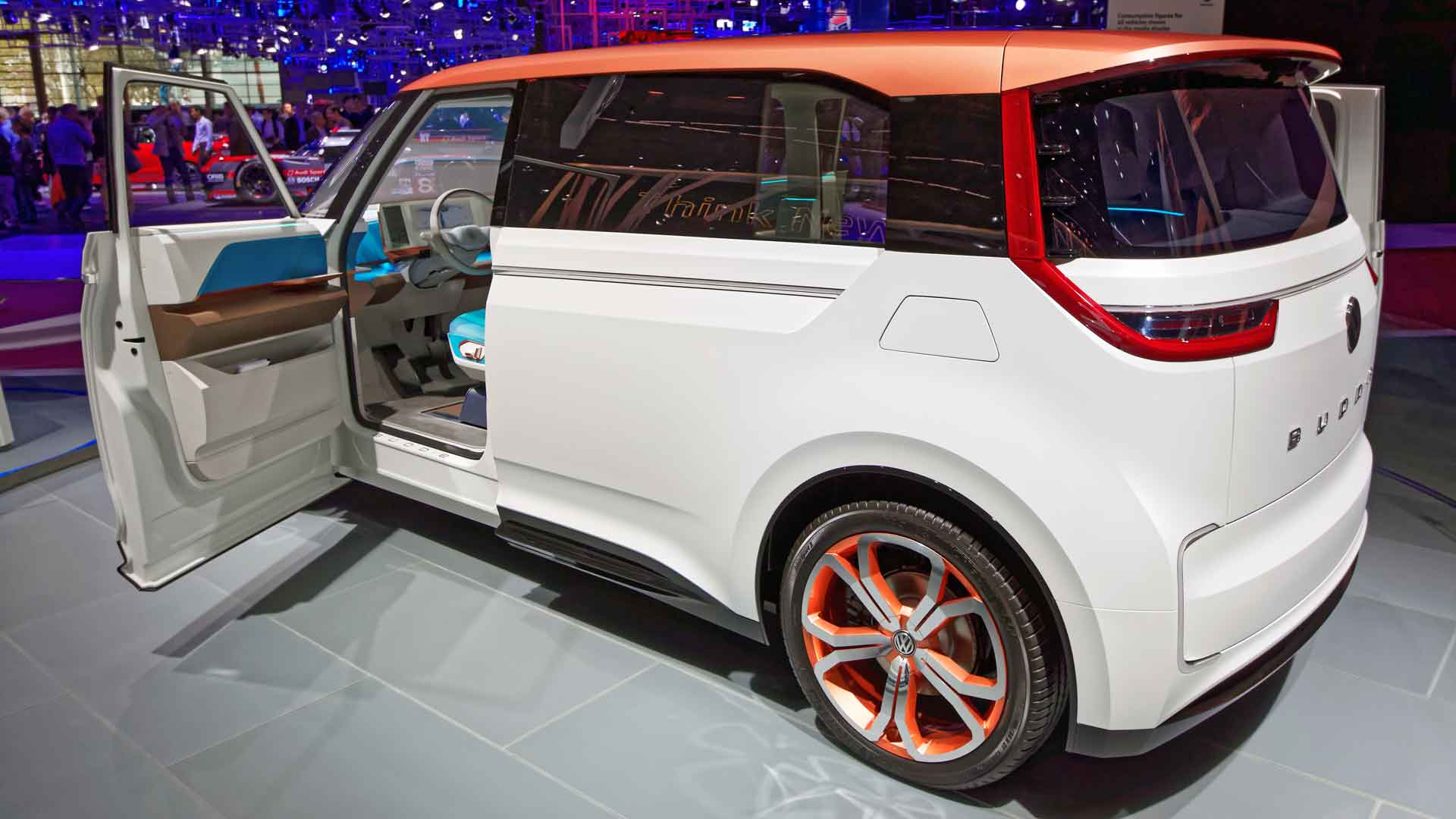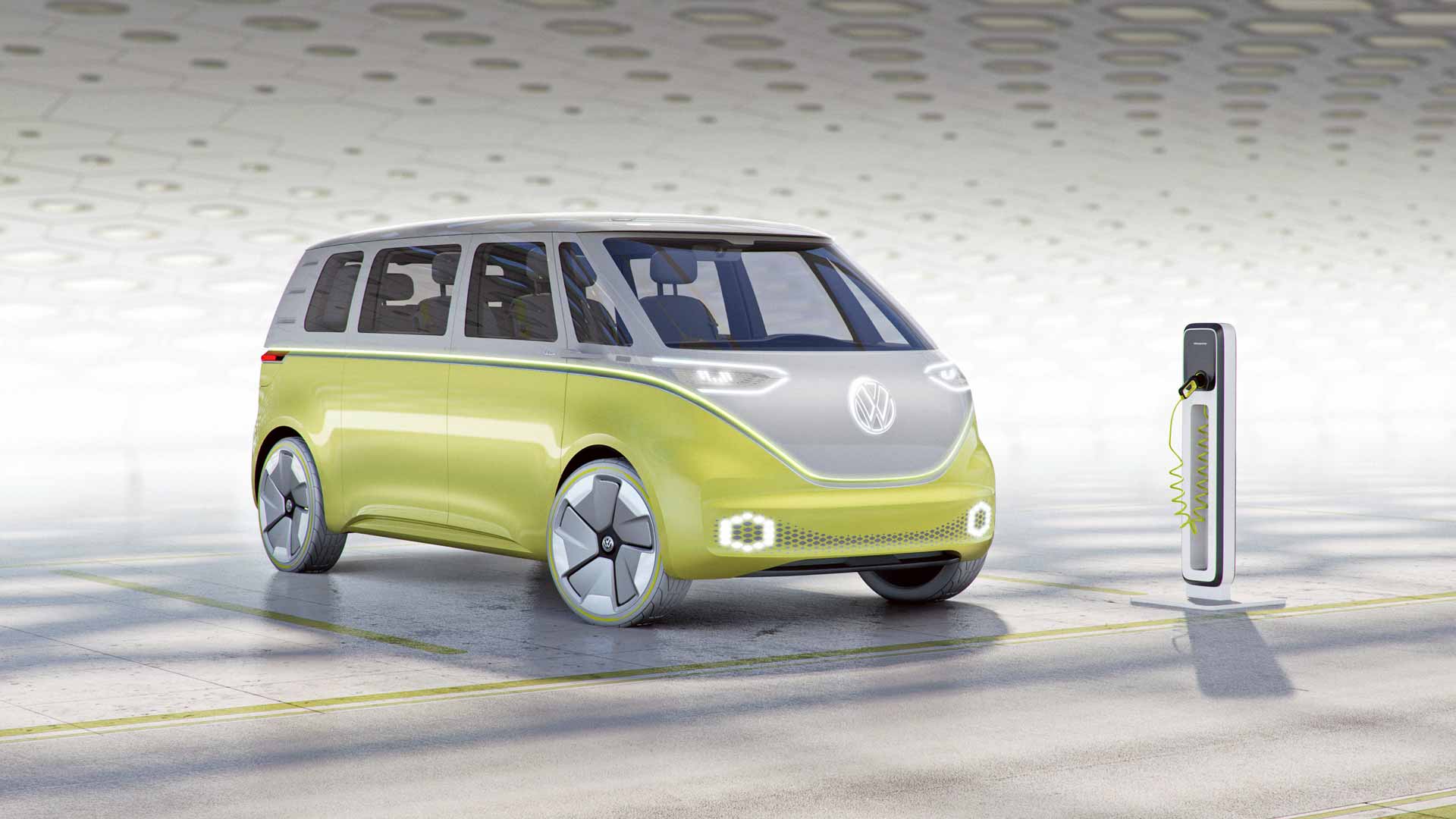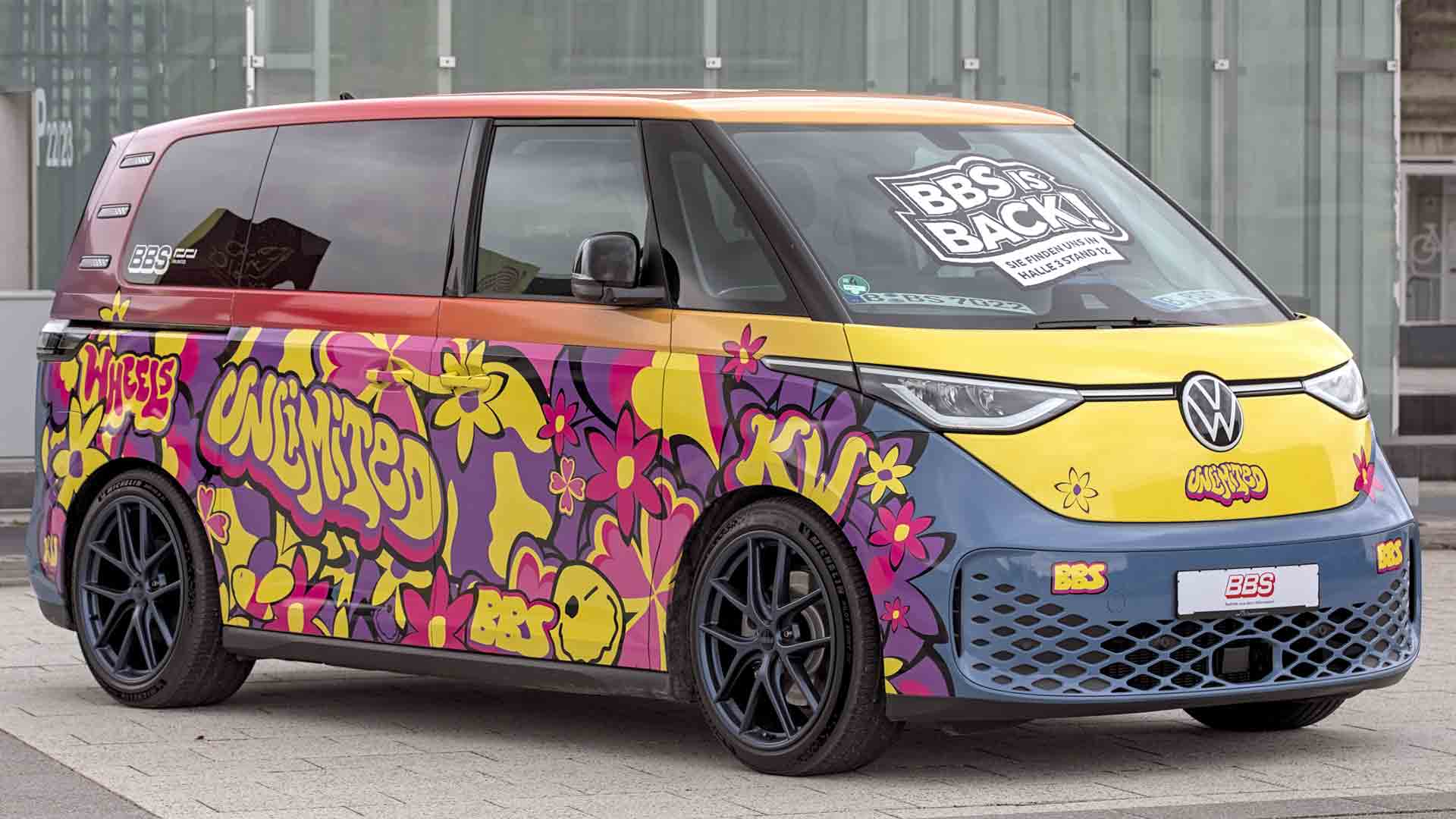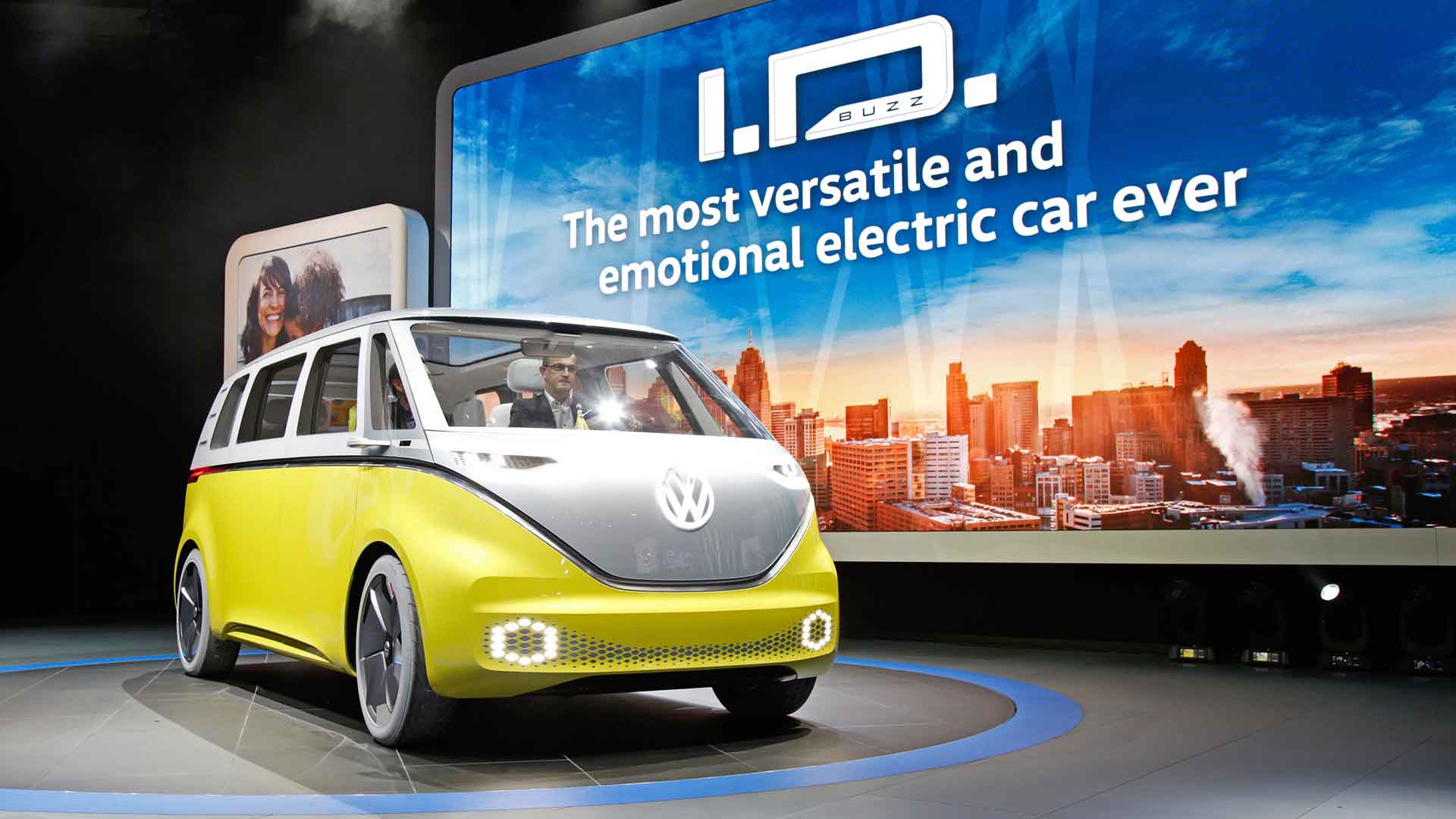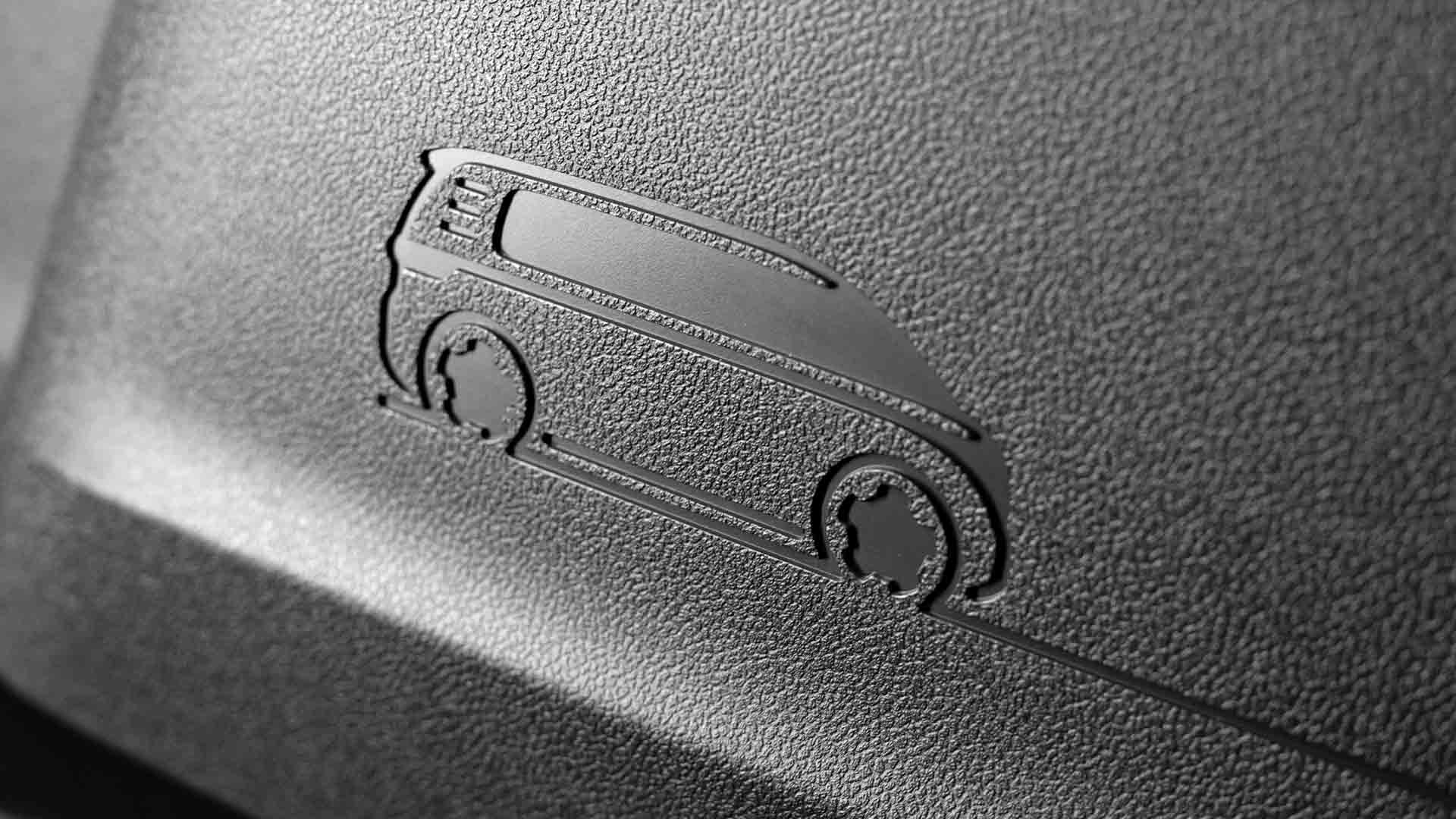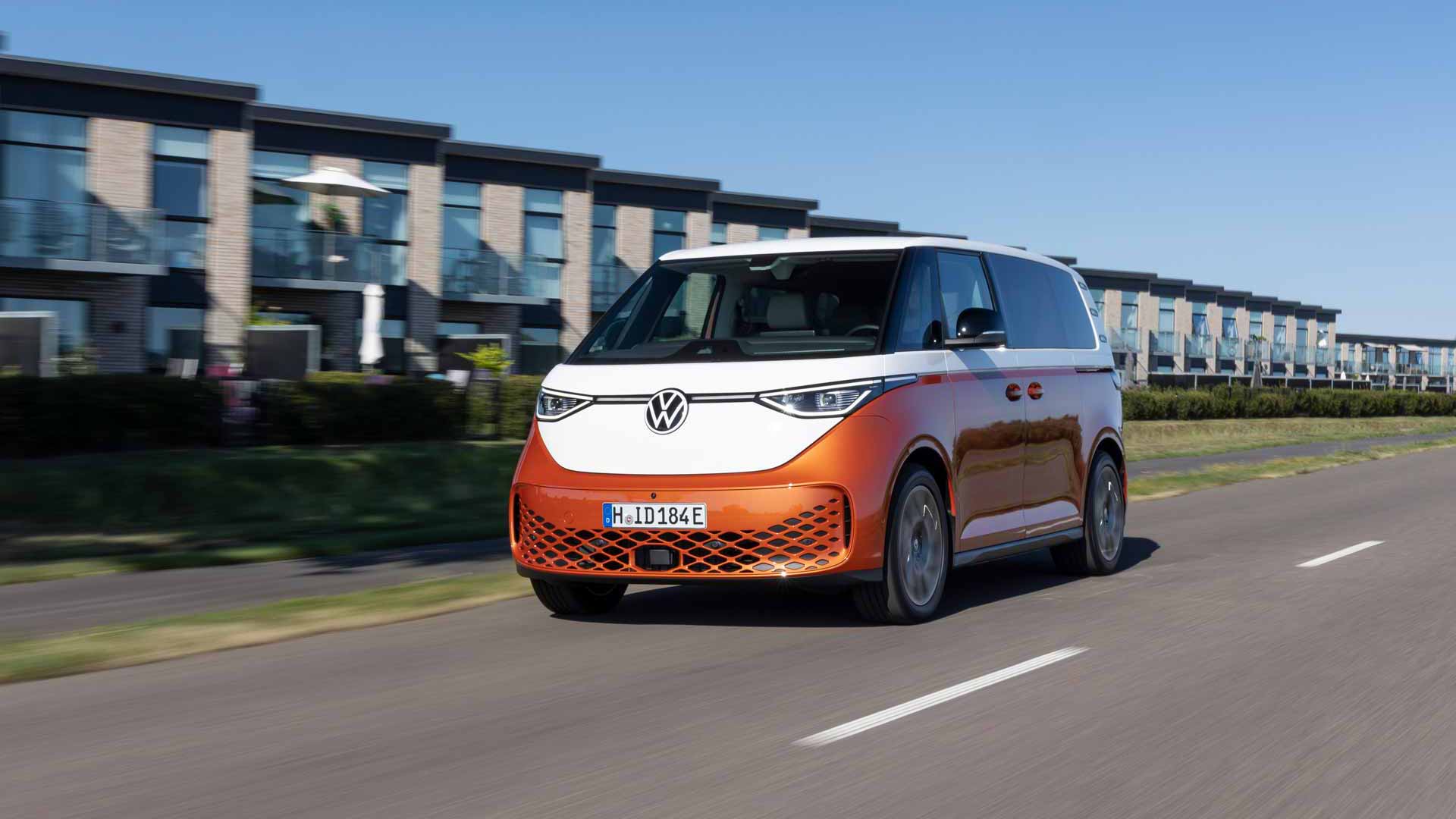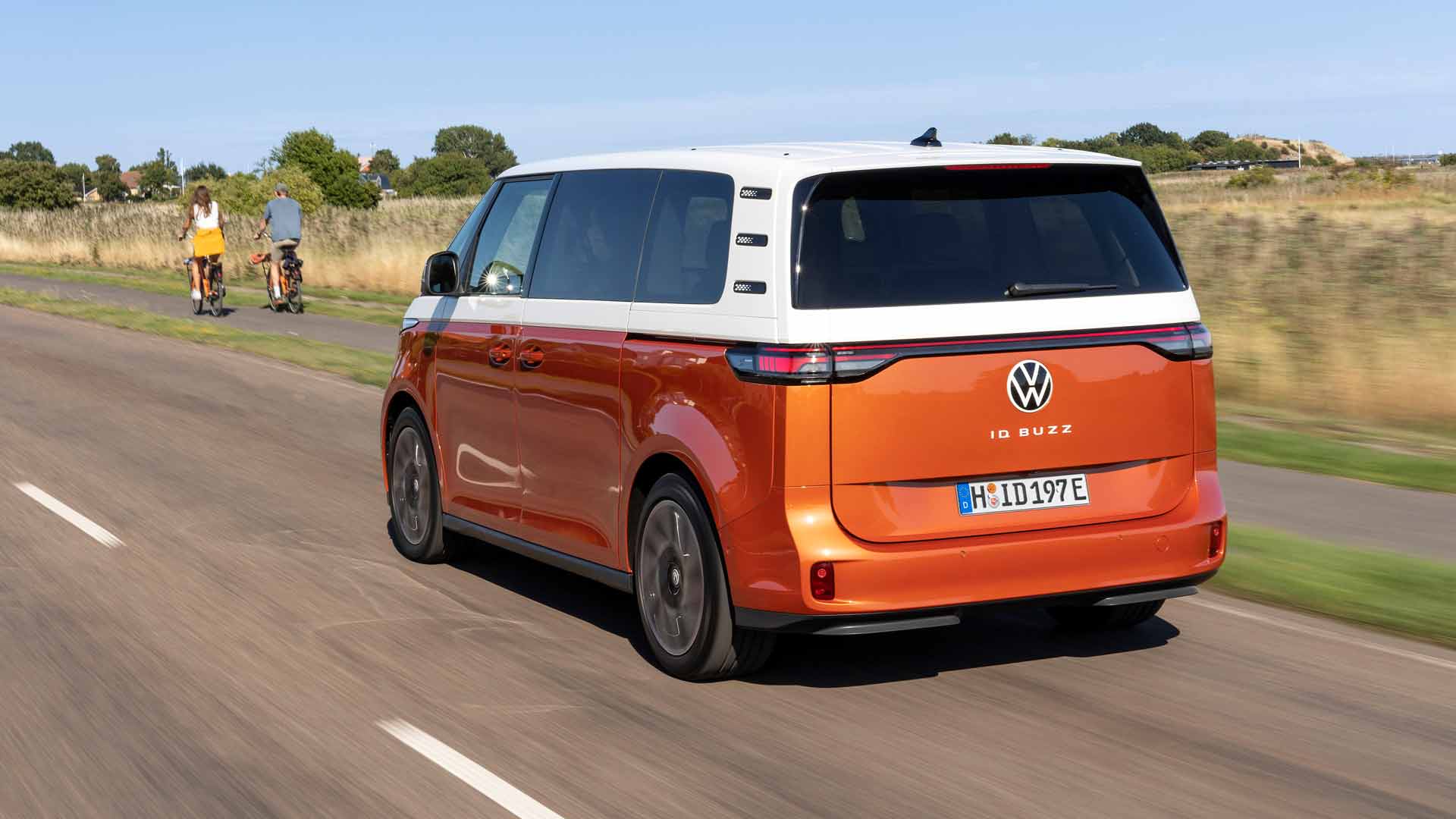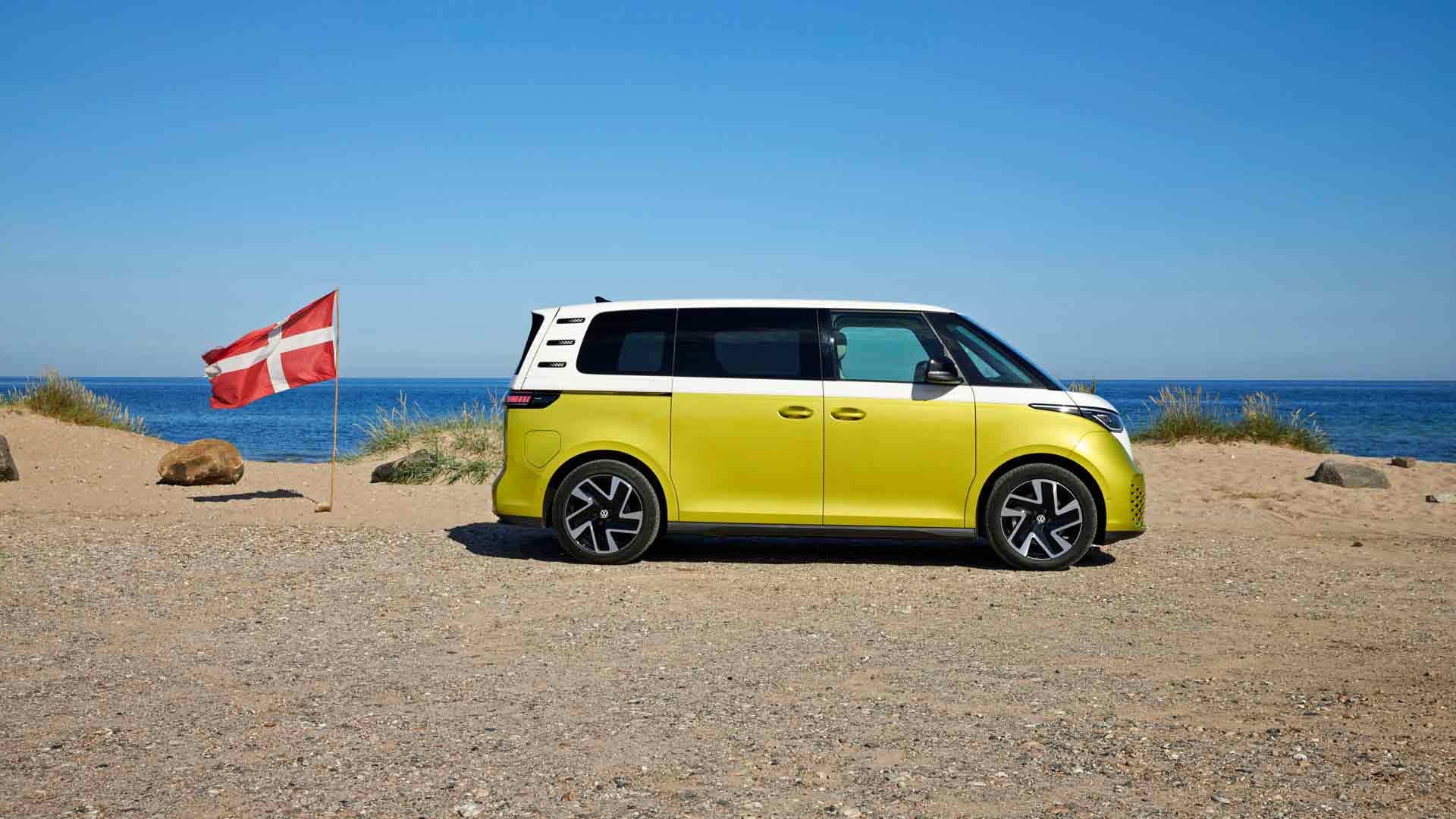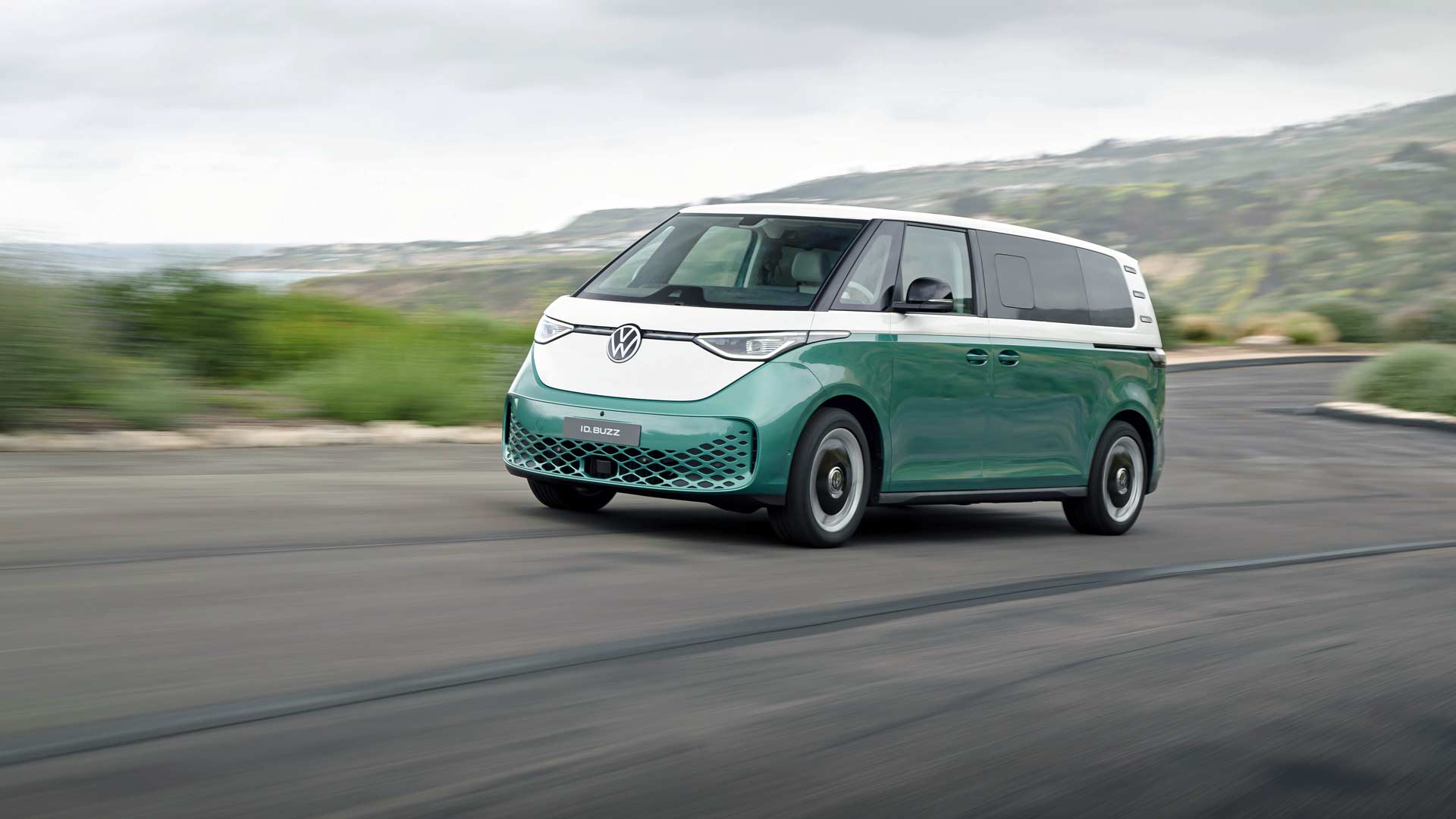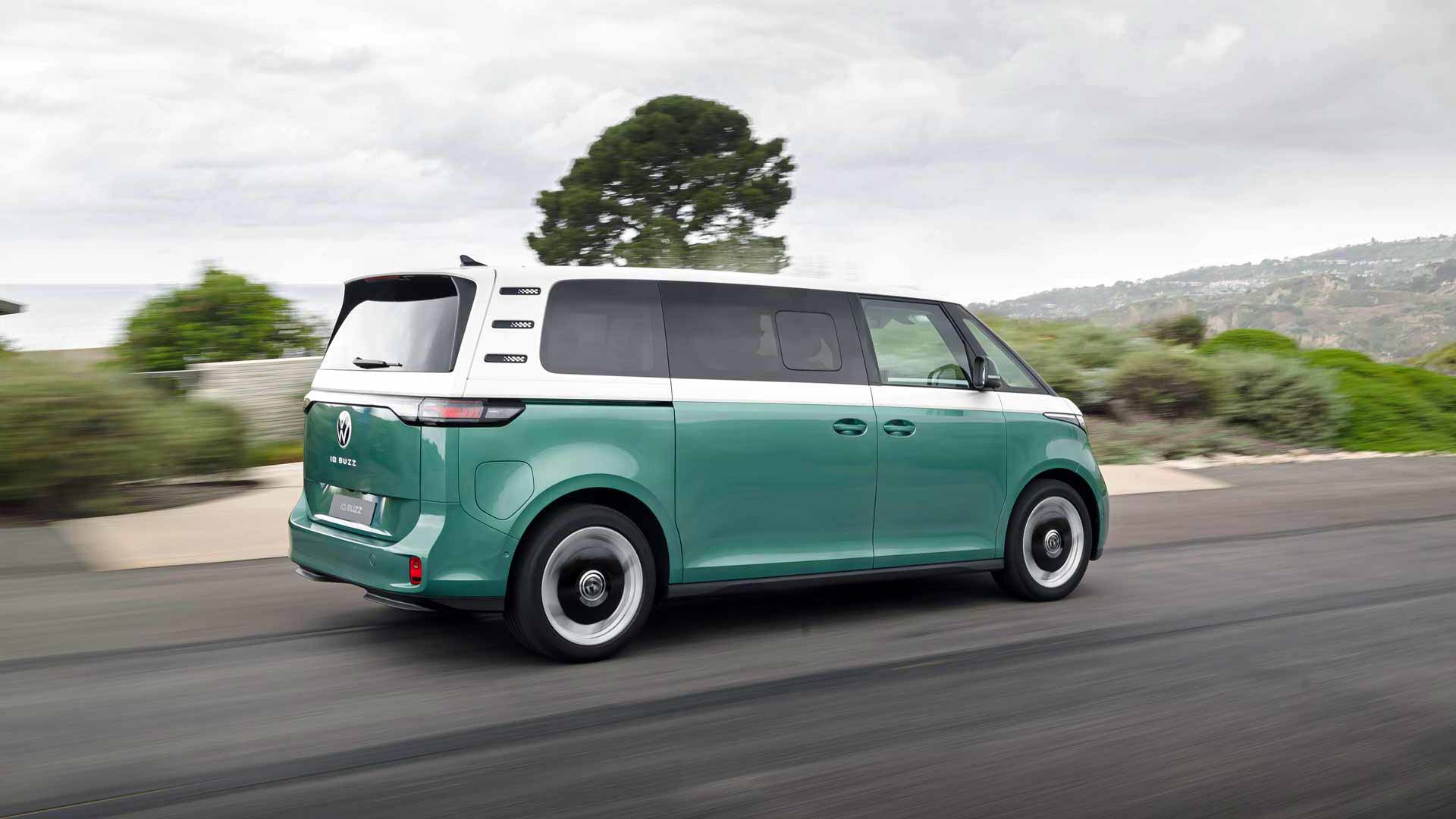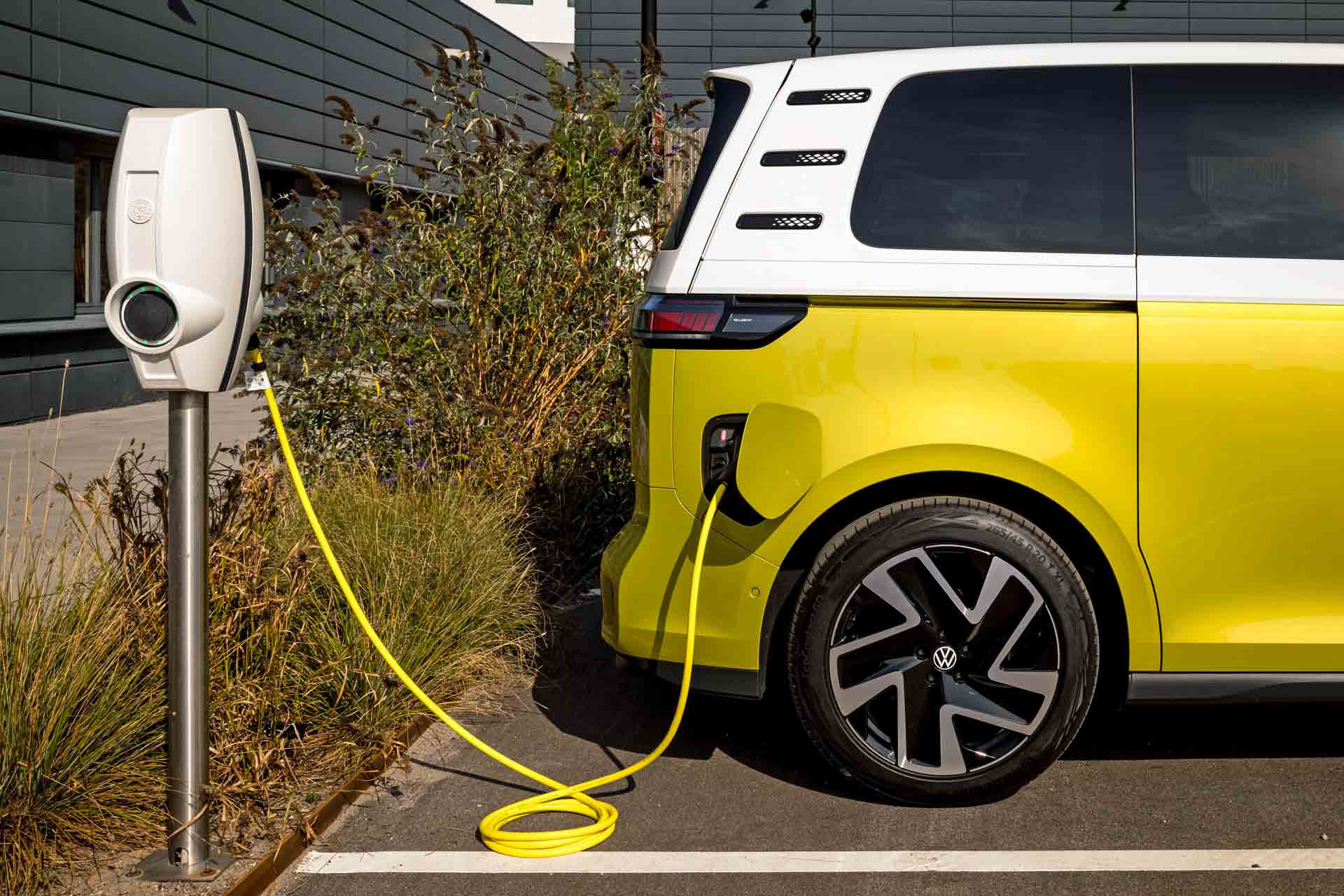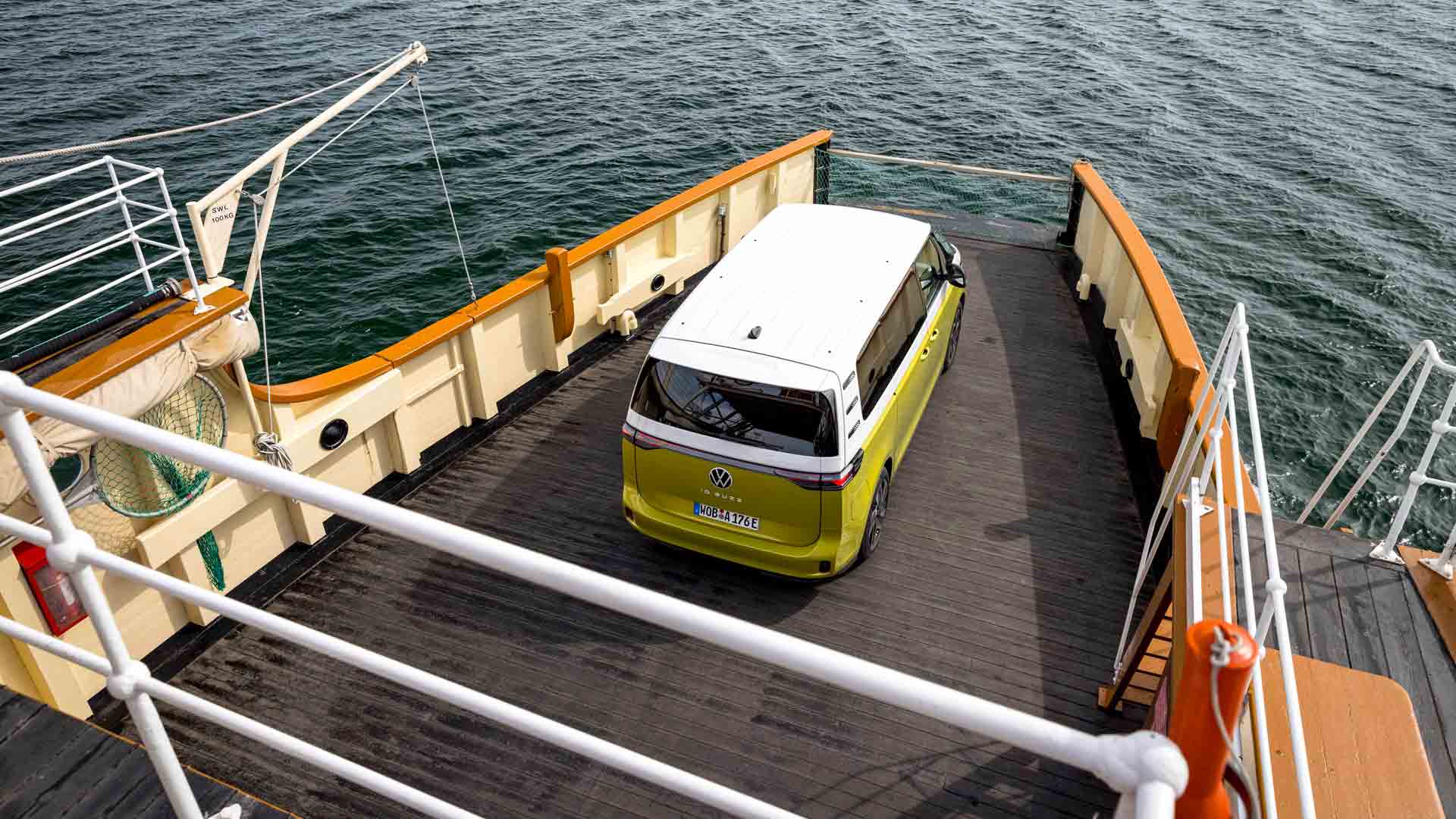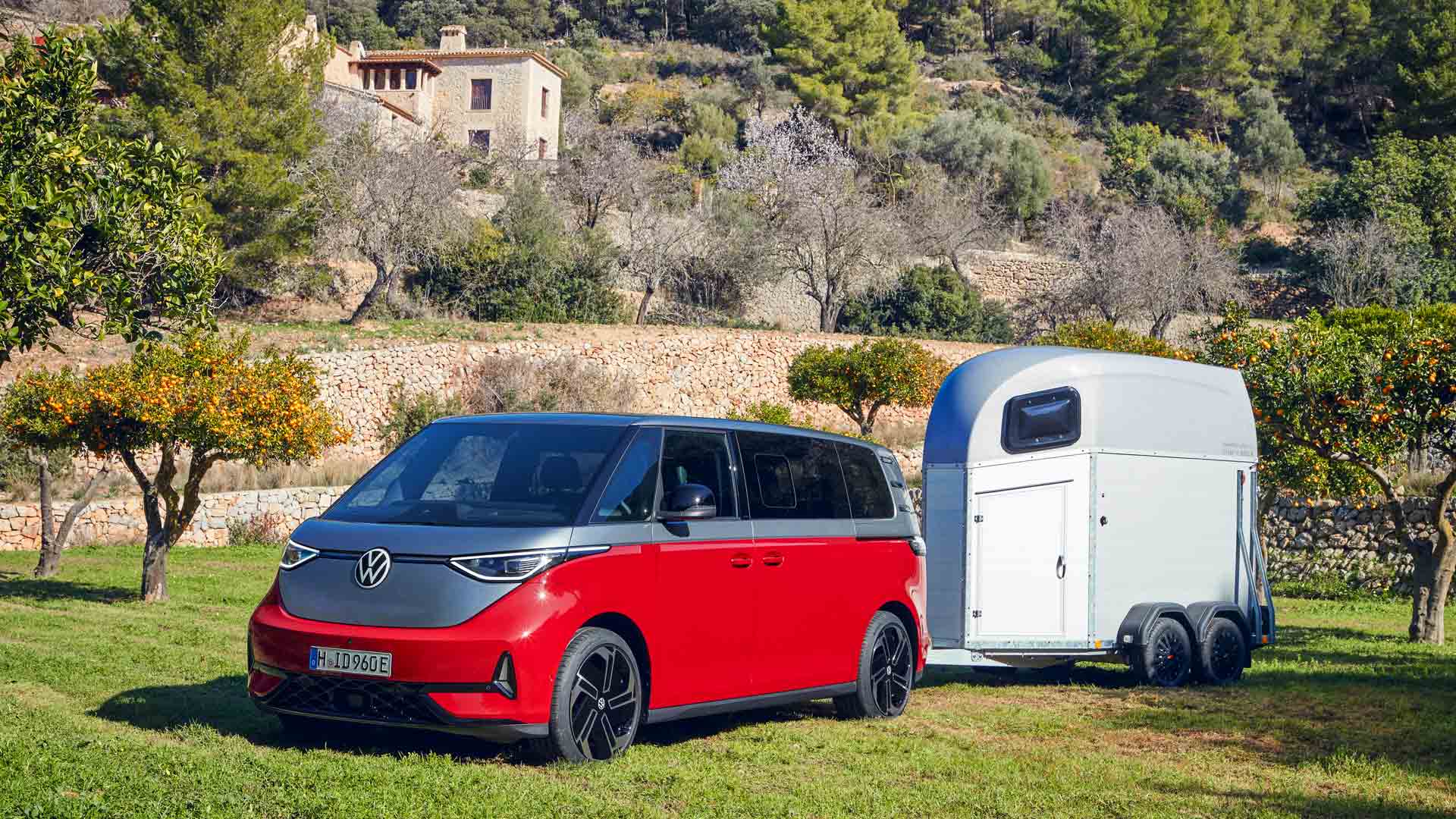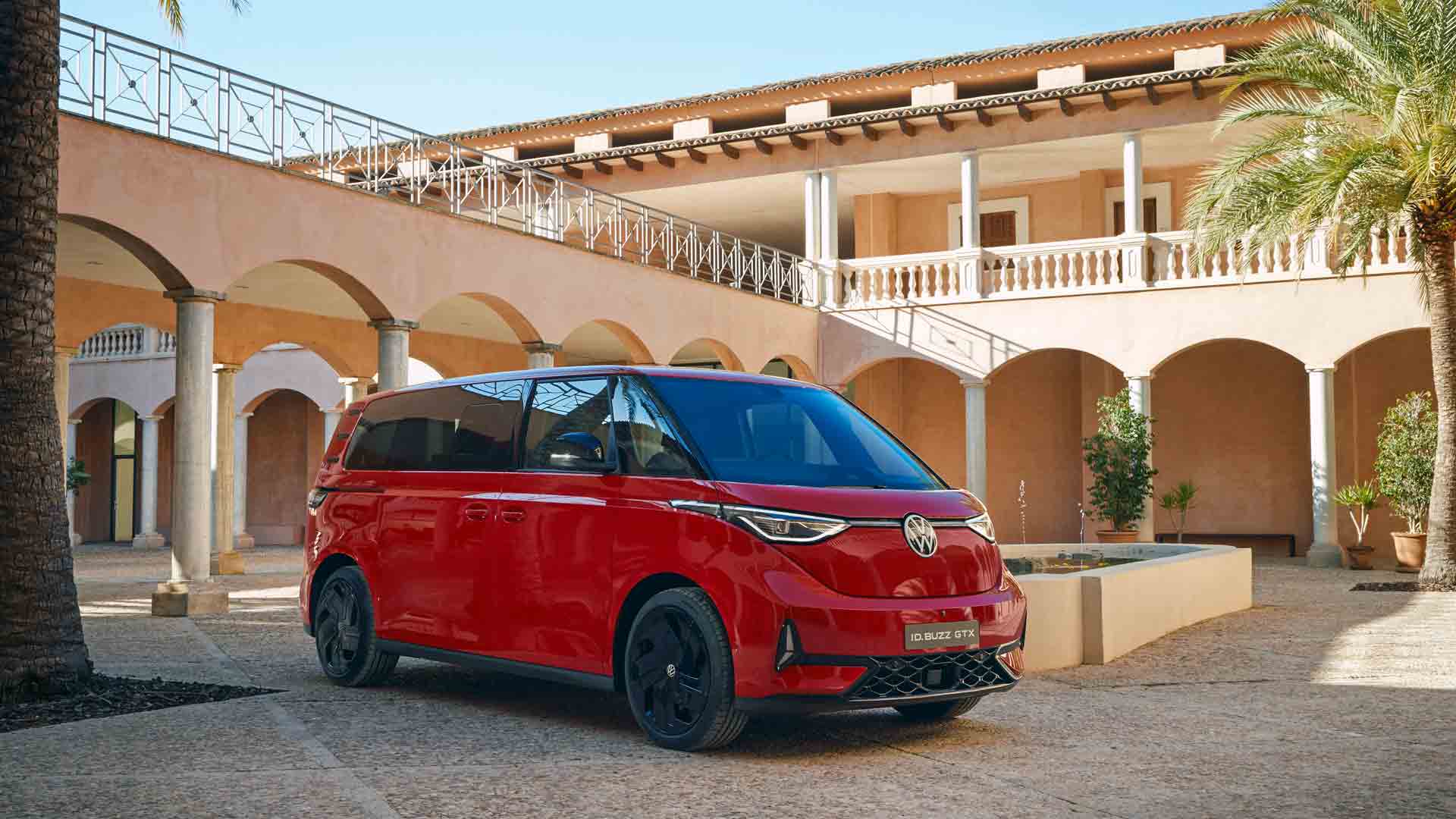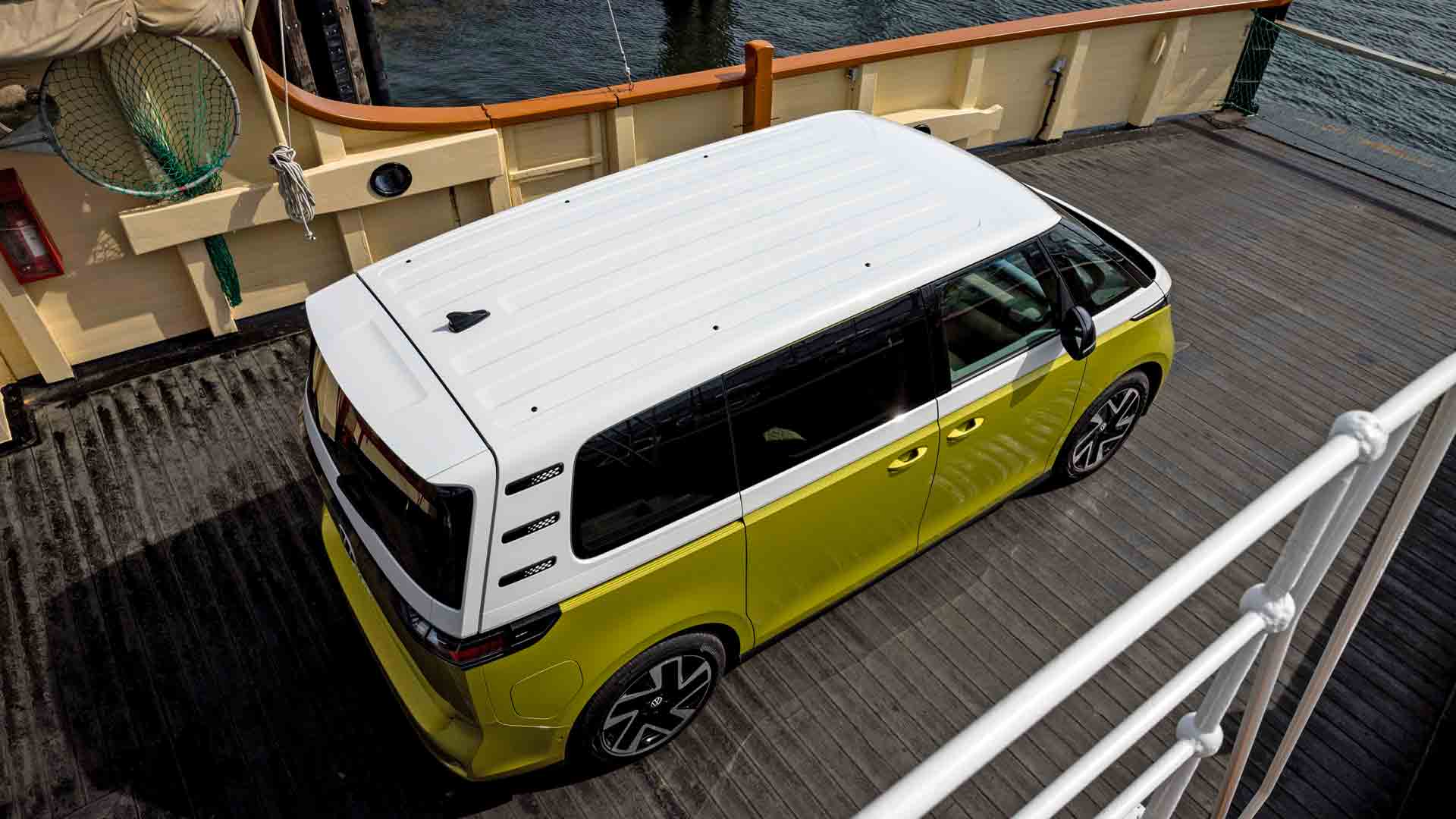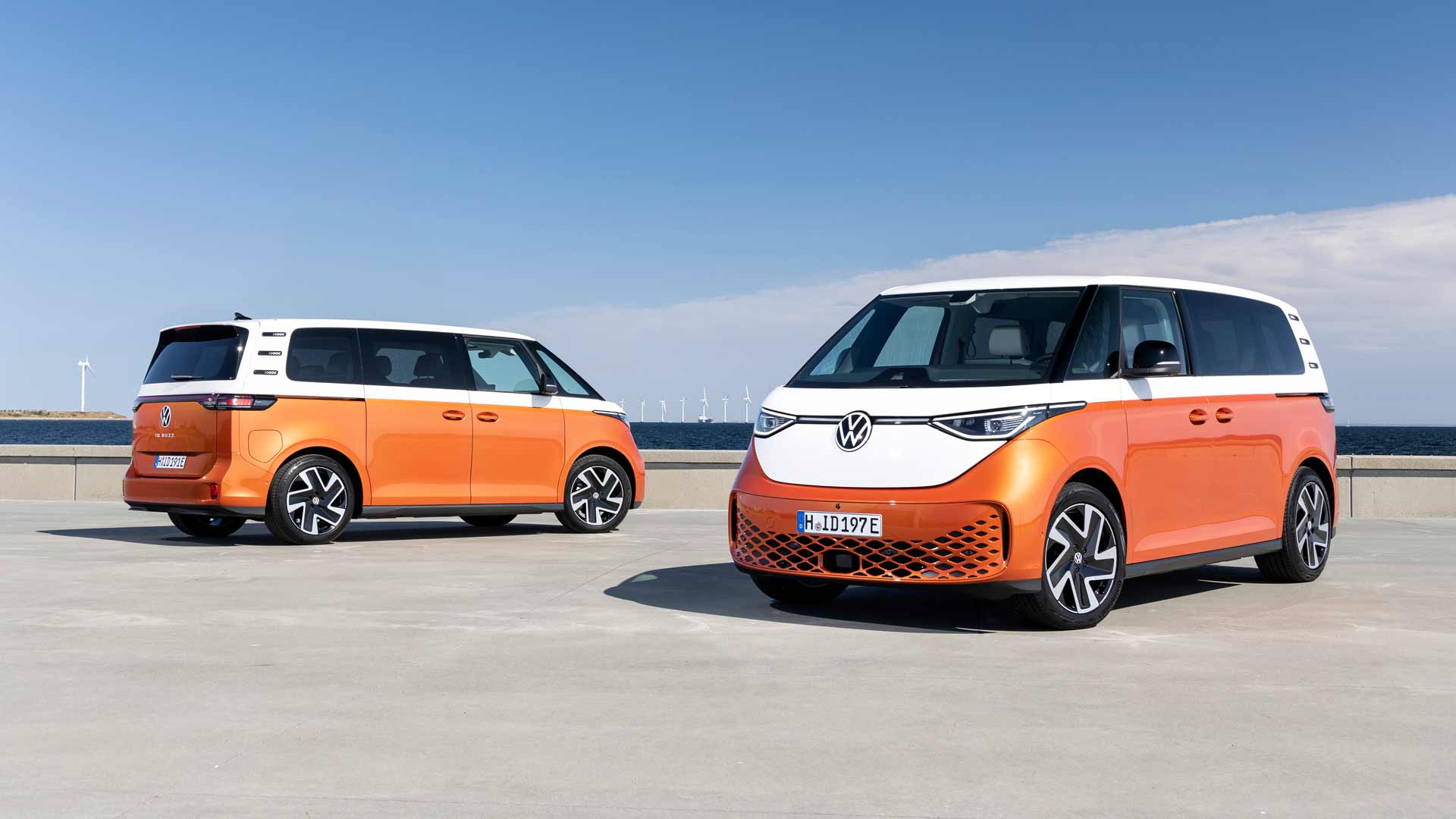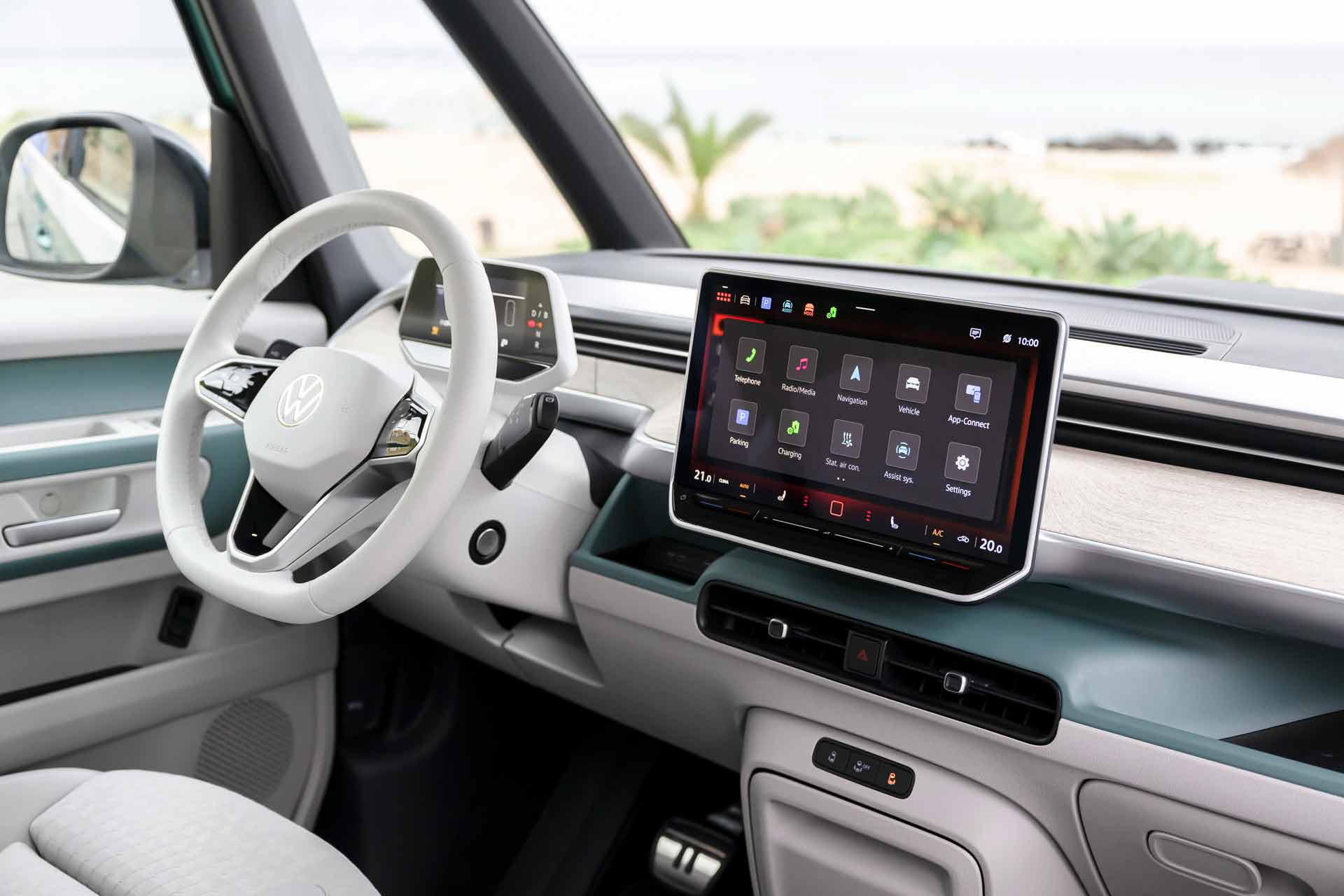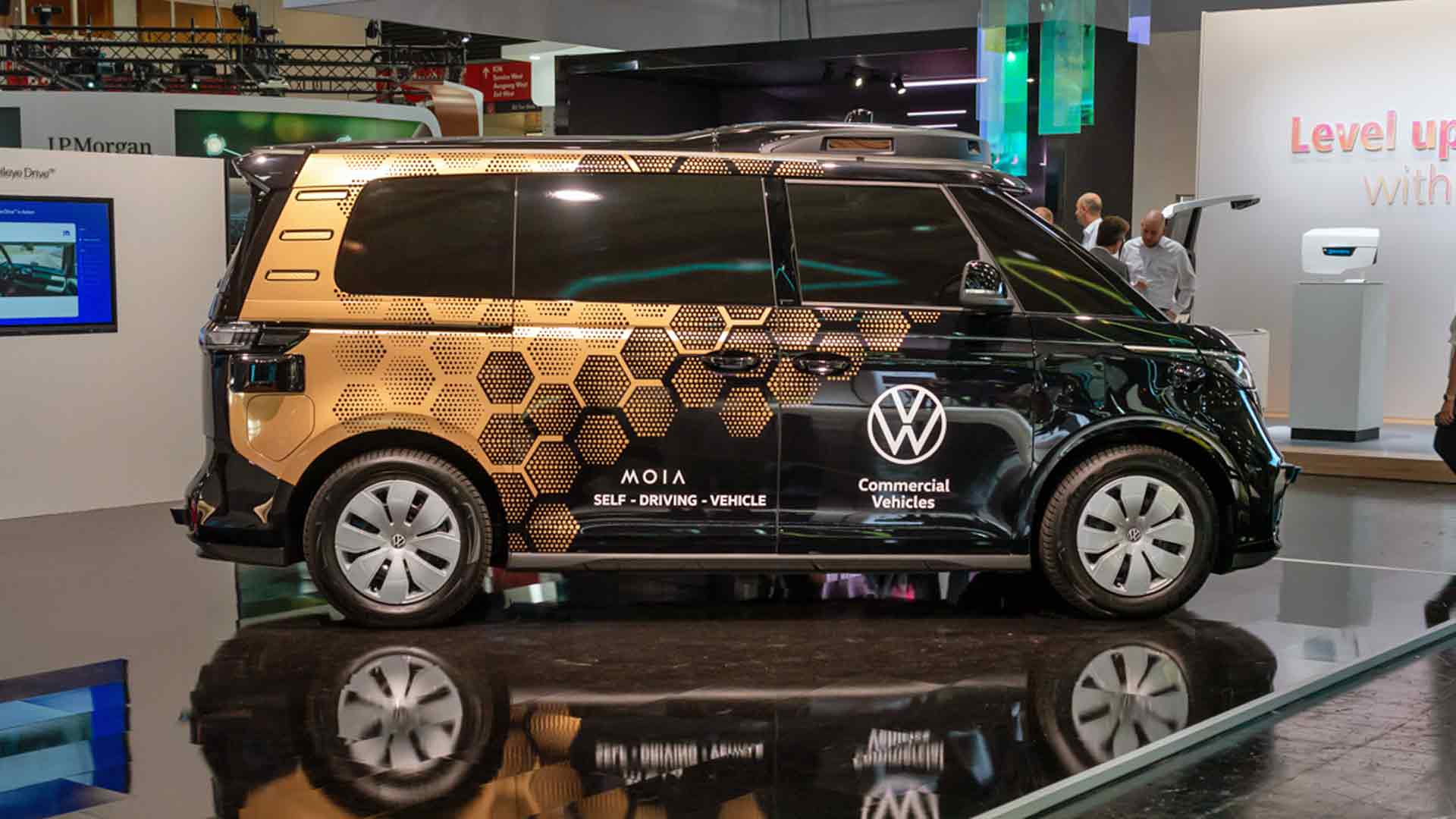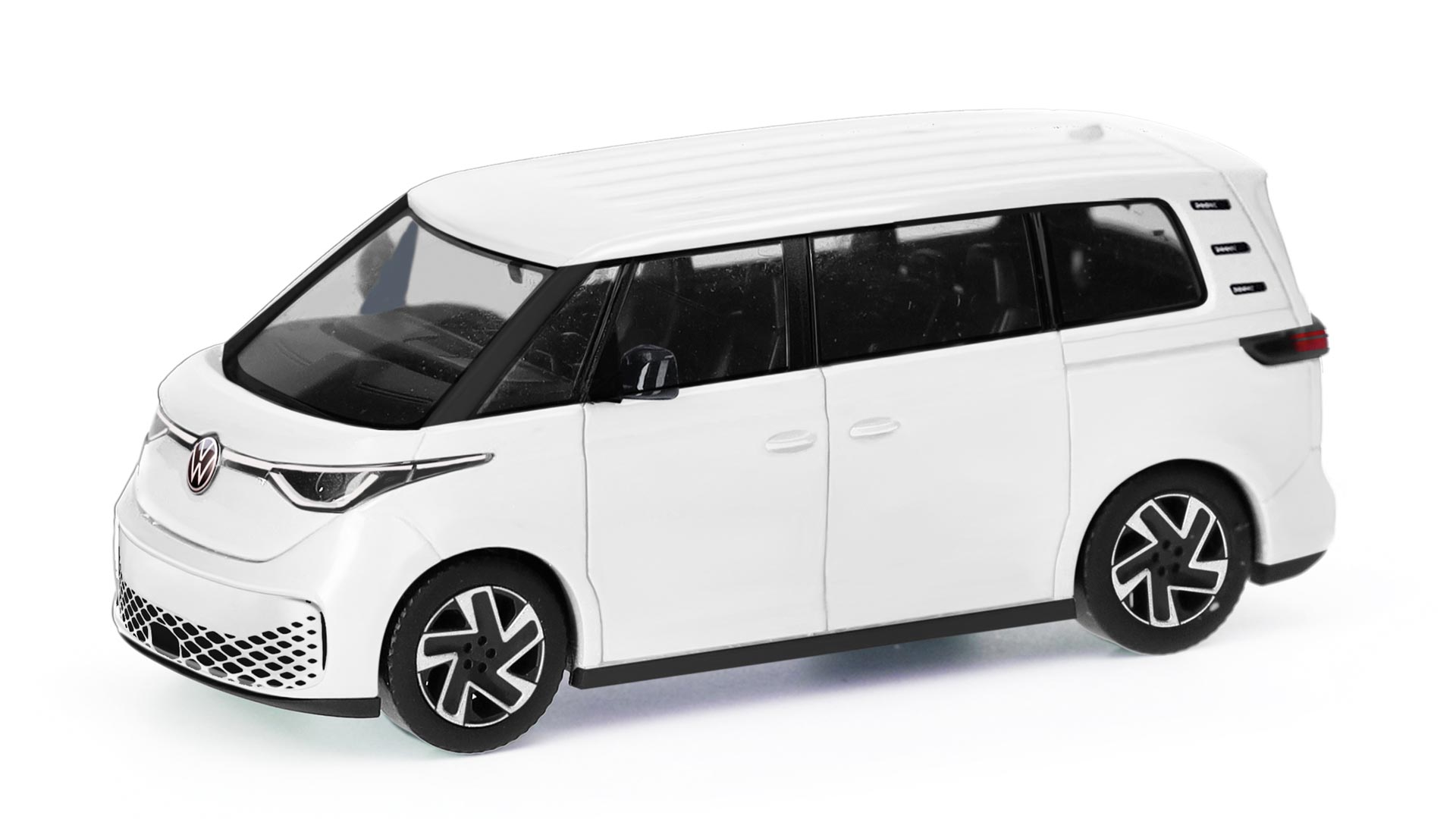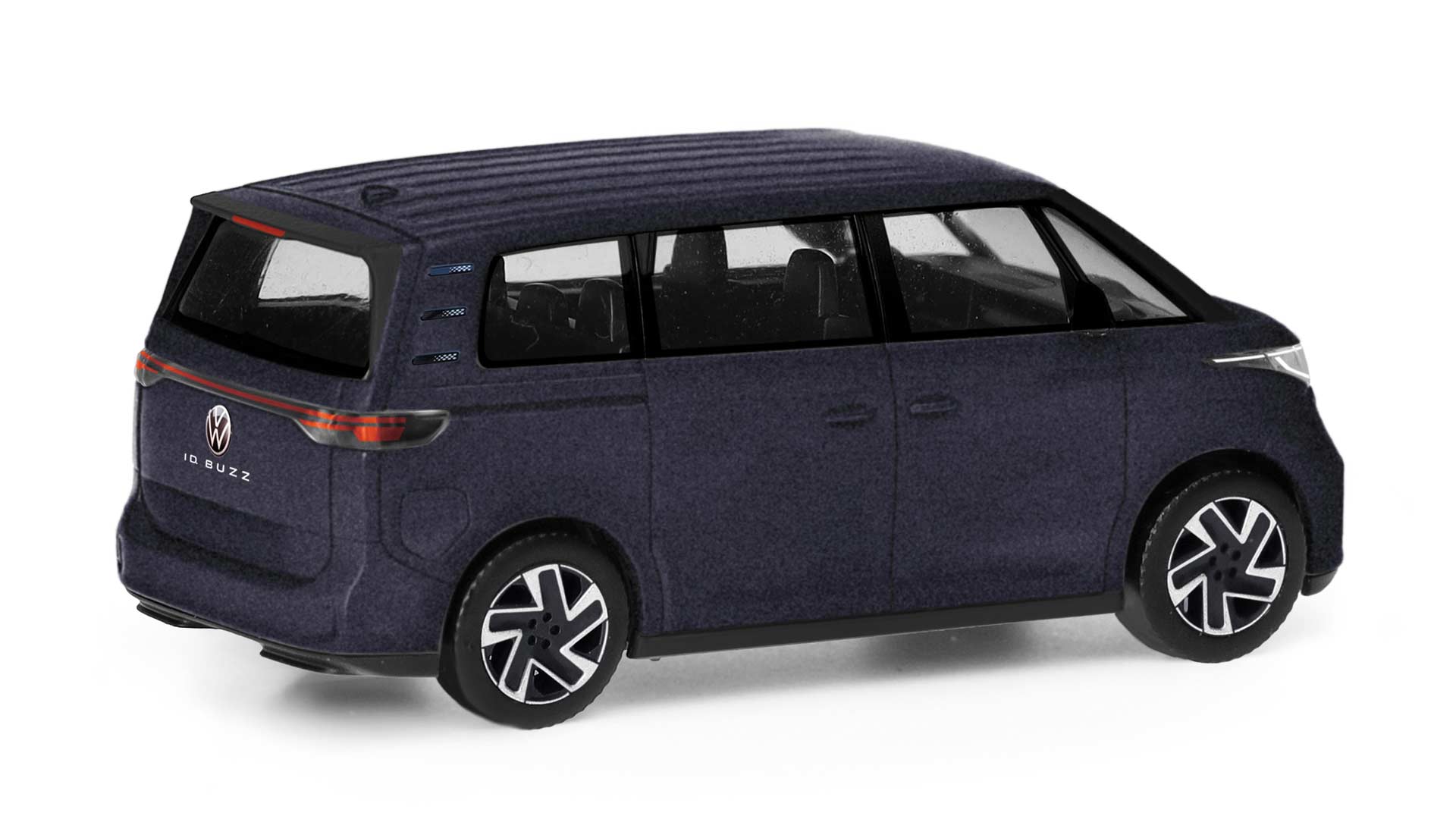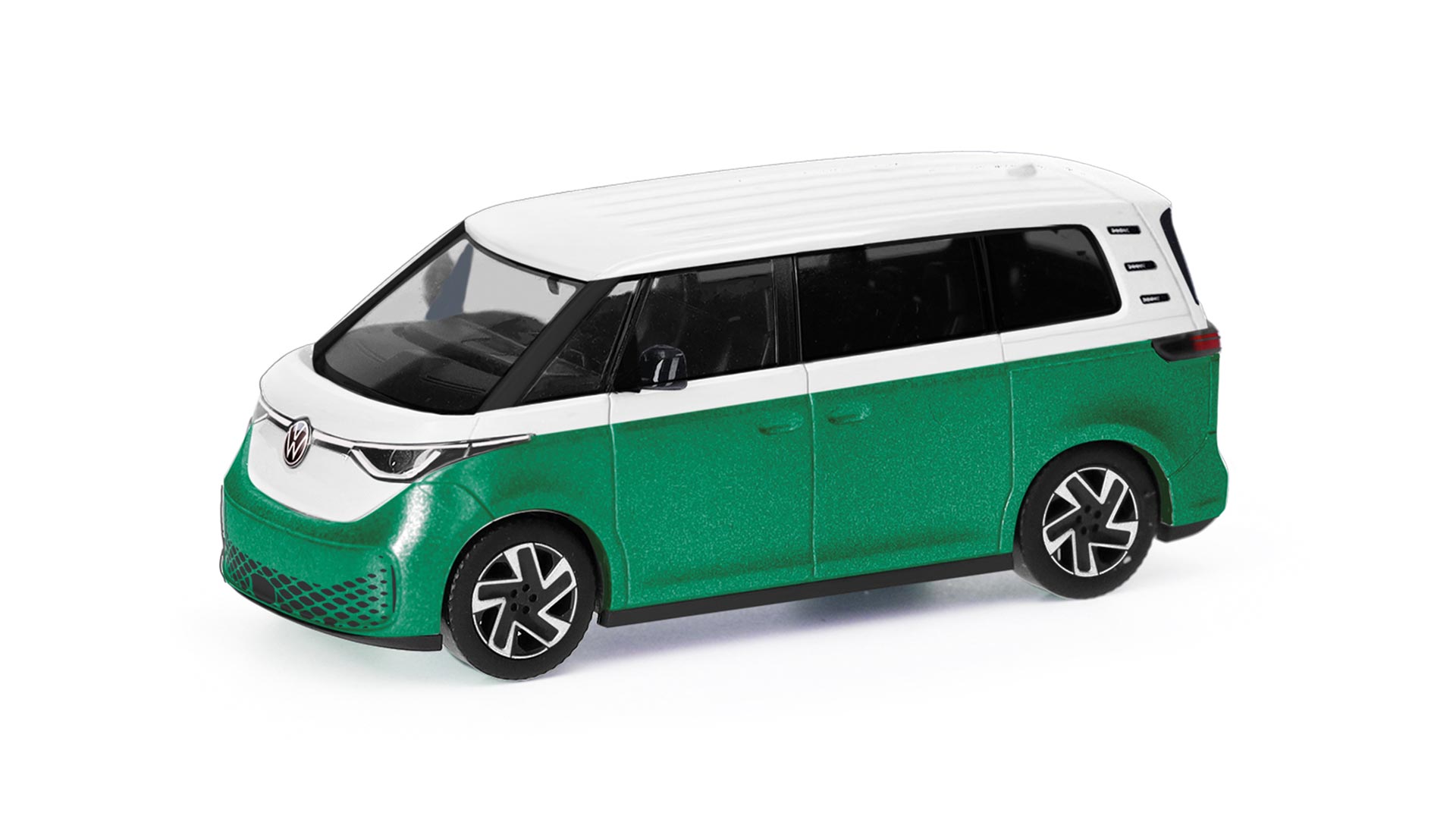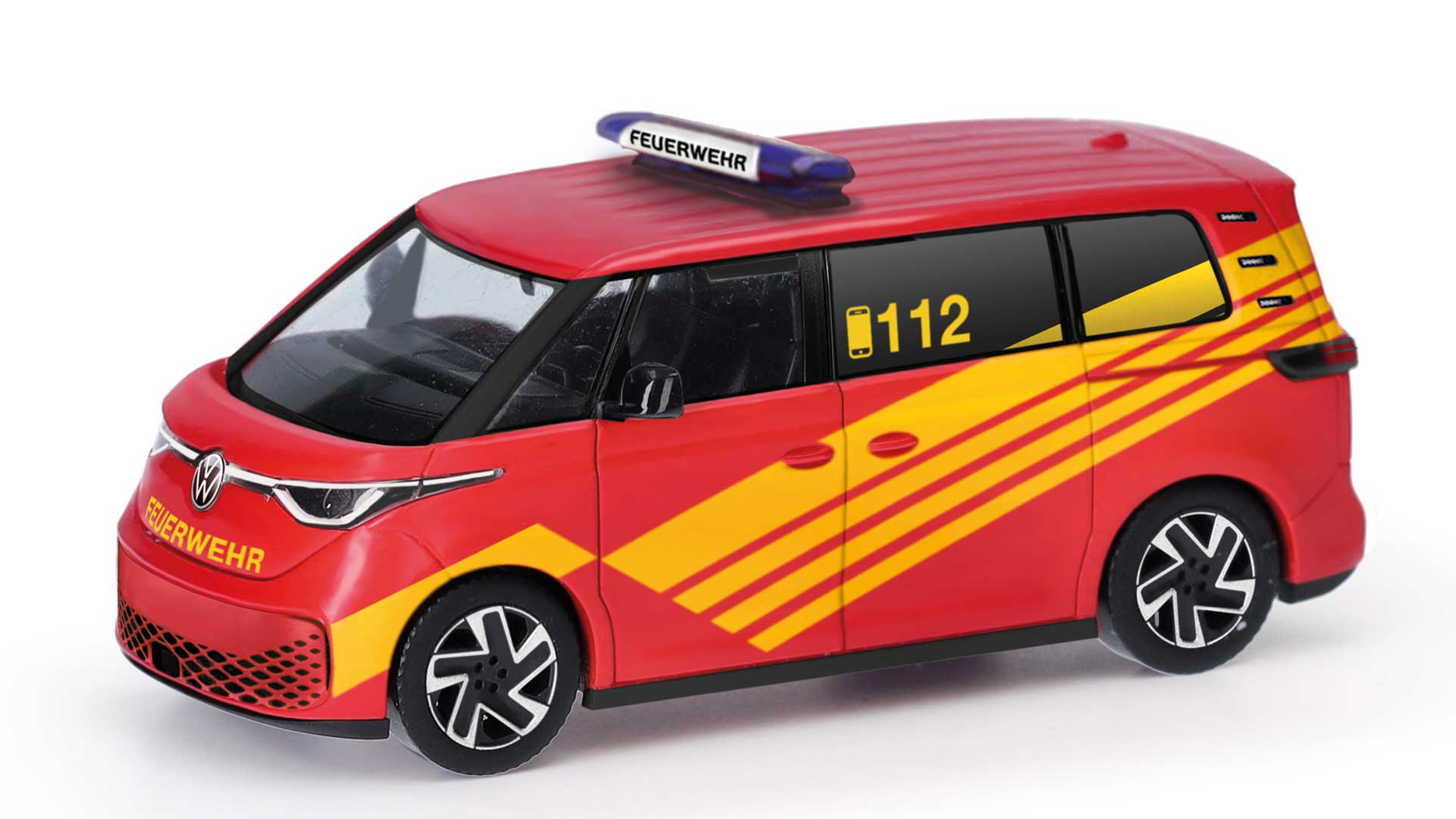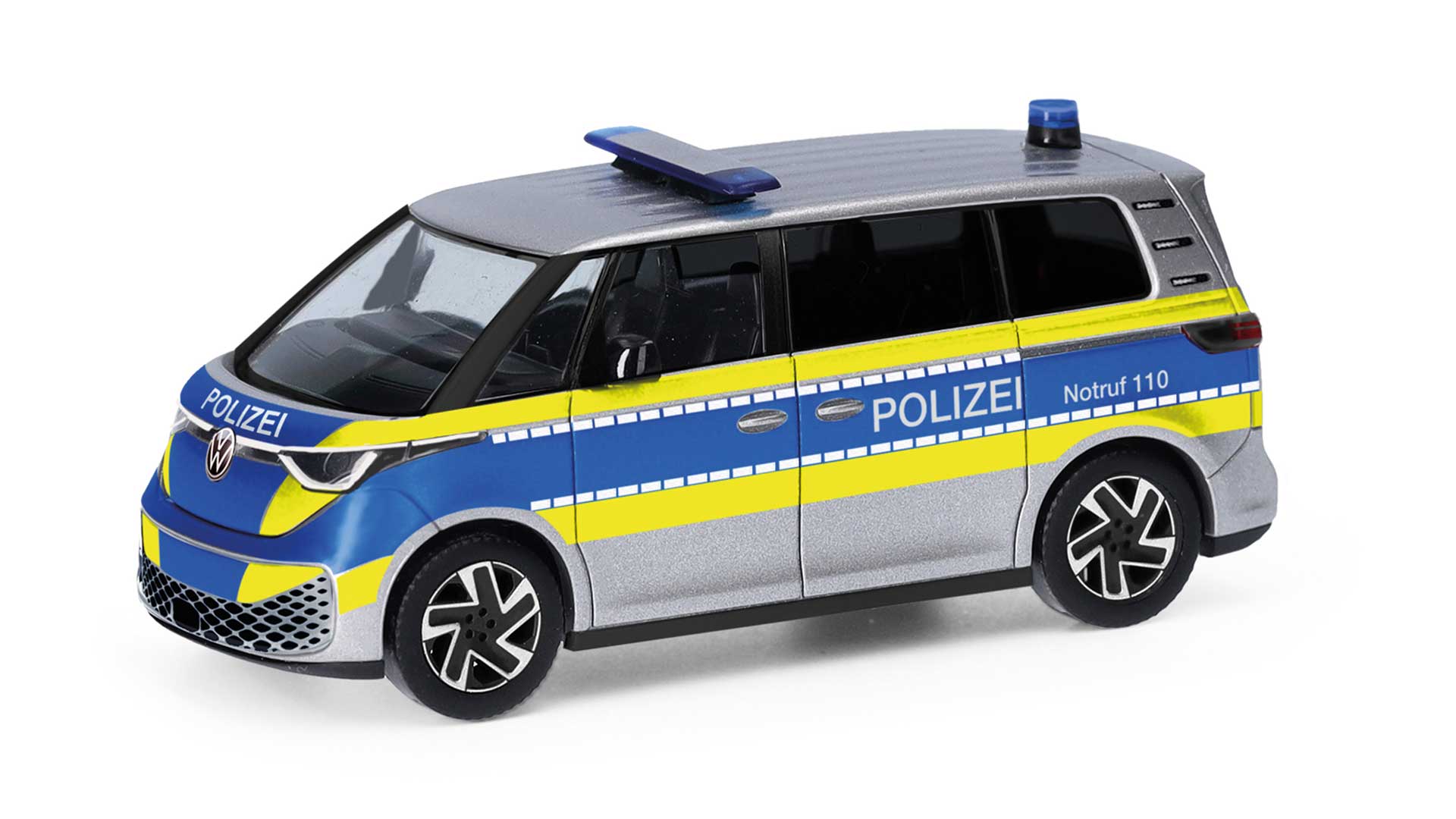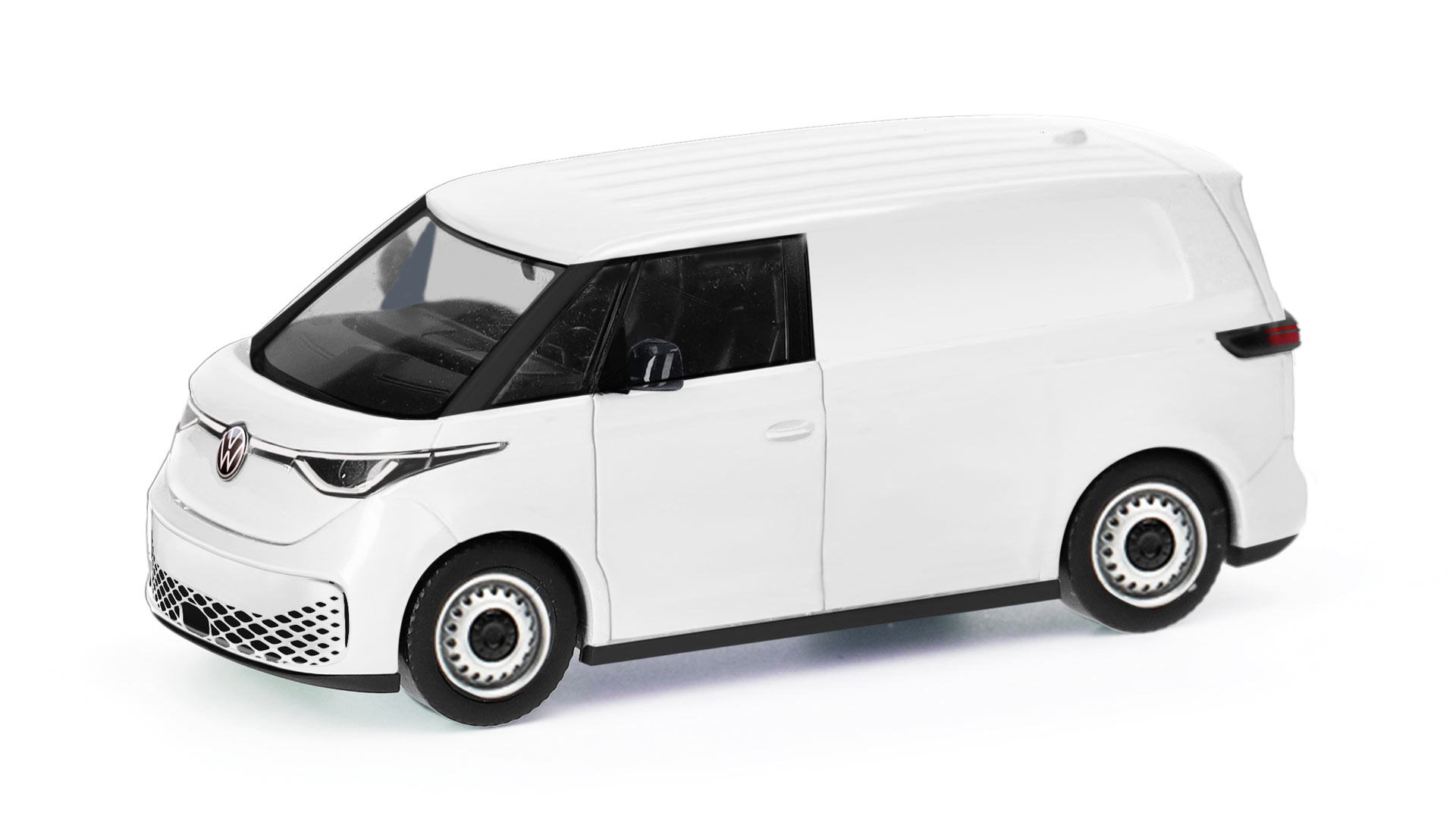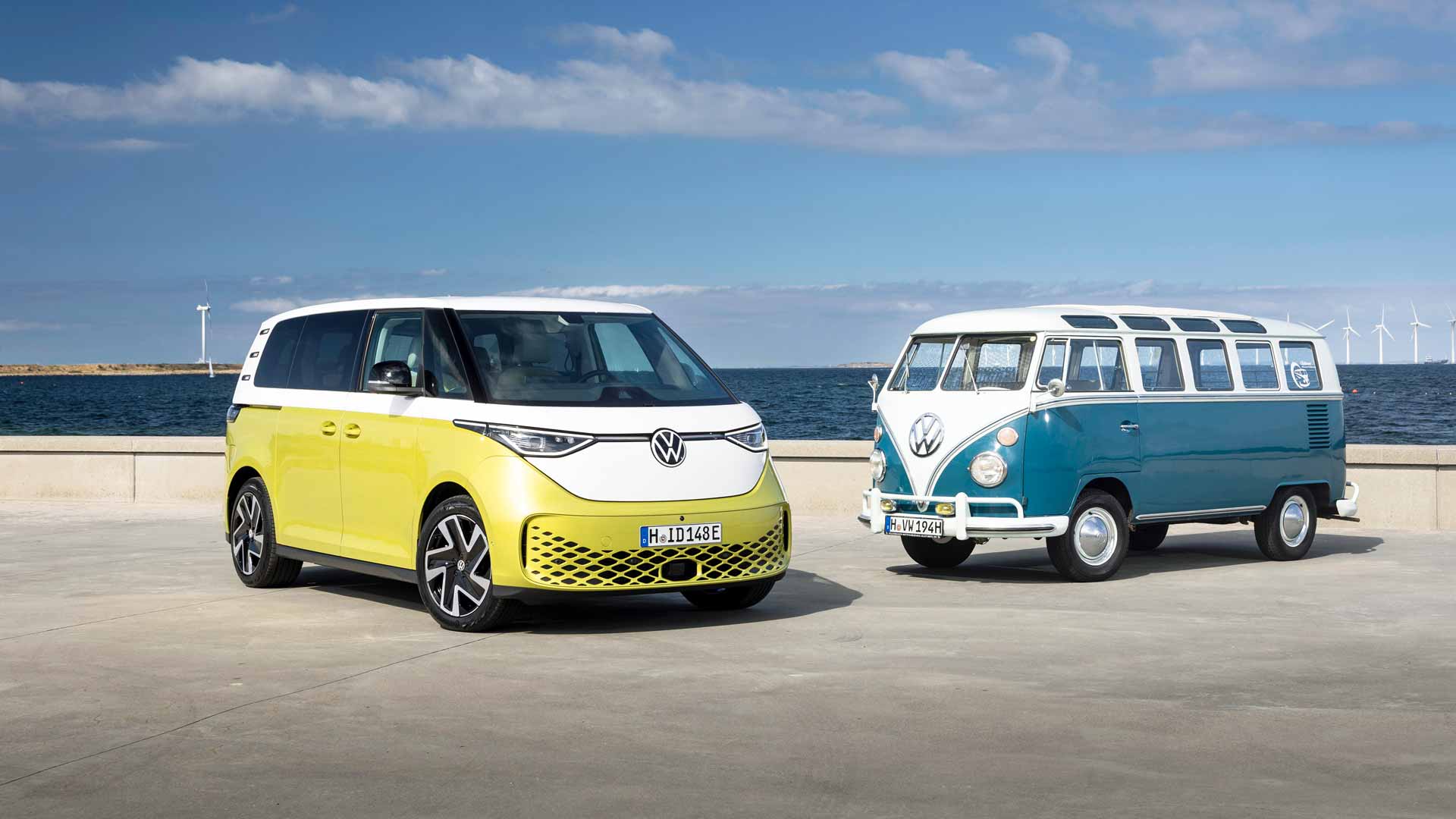A Long and Difficult Birth
Since May 2022, the VW ID. Buzz has been available from Volkswagen dealers and in June 2024 it will also be available as a Herpa model. A two year delay – but what's that compared to the 21 years it took Volkswagen itself to turn their first study into a production Buzz! Let’s look back at this long gestation.
Young children love the name when they hear it for the first time. When you "introduce" them to the minibus and tell them it's a VW ID. Buzz, they automatically hum the nursery rhyme, "There's a Bi-Ba Butzemann dancing in our circle" to themselves. And if they have music in their blood, they move to it rhythmically. If they come from southern Germany, Apfelbutzen also comes to mind. This is the Swabian term for an apple core. And the Swabians call a baby a "Butzele". Likewise, probably their ID. Buzz, if they’re in anyway attached to it. So, it's a nickname for the VW minibus. But of course, it is not named after the Bi-Ba-Butzemann or the Apfelbutzen. That would be too profane. A German car that wants to be successful internationally needs an English name. The days when German cars were called "Taunus" or "Trumpf Junior" or "Windspiel" or "Isabella" or "Isar" - that's yesteryear. Being global means being English. In English, "to buzz" means "to hum", but not in the sense of bees, but in the sense of an electric motor. What's more, "buzz" starts with the same "bu..." like "Bulli" (the German nickname for the Kombi minibus), and the ID. Buzz is intended to be reminiscent of this icon. And then there's "ID". Of course, this also has significance at Volkswagen, standing for "Intelligent Design", in contrast to the vapid style of all the vehicles whose names don't start with "ID", apparently.
All new, all Buzz: Test drive in the ID. Buzz in Eckernförde. It wasn't discreet. It was a head-turner. Pictures: Waldemar Behn (†)
21 years between the first study and the series model
The design is closely linked with the name of its creator, the Mexican Einar Castillo Aranda working under VW's chief designer Klaus Bischoff. Is that really true? That may be the official narrative, but isn't the design of the ID. Buzz not much older? There was something there, well over 20 years ago. Older people will remember the vehicle that caused a sensation in 2001 and was called the New Microbus. It was just a study, but at the time, Volkswagen was riding the retro wave and had launched the New Beetle in 1998, reminiscent of the vehicle that made them famous. So, it was only logical to create a Microbus with references to the original 1950s Kombi. The study made its debut in the USA at the Detroit Motor Show in January 2001, at that time equipped with a conventional internal combustion engine, the 3.2-liter VR6 boasting 231 hp. In other words, "normal" technology combined with retro design, just like the New Beetle sharing Golf technology.
It all started 23 years ago. At the NAIAS in New York, the New Microbus study was presented on the platform of the upcoming T5 Bulli. The concept was retained until spring 2004. Then it disappeared into oblivion. Photos: VW
The study was well developed and about to go into series production. The whole thing was a favorite of Ferdinand Piëch, the Group's CEO at the time, but by the time Bernd Pischetsrieder took over from him, the Microbus idea was dead. Or not quite? At the 2011 Geneva Motor Show, there was something similar, a study called the Bulli Concept, in the same style as the then ten-year-old Microbus (taking advantage of the fact that retro design doesn’t age), only slightly shorter. It was on show in Geneva with electric drive, although VW announced it could be released with an internal combustion engine as of 2015. Like the New Beetle, the car would have been called the "VW New Bulli" if it had gone into series production. But once again, that remained a declaration of intent.
This was followed by the first hybrid successor, debuting at the 2011 Geneva Motor Show, significantly smaller than the first New Microbus study. Powered by a combination of a 114 hp petrol engine and a 40 kWh battery. The photos above were taken at the International Autoshow in Toronto 2012. Photos: [1] Oaktree b, [2] Michael Gil
The VW emissions scandal was causing Wolfsburg to hit the reset button on many a project. It sounded only reasonable to assign the internal combustion engine to the dustbin, after having cheated and being caught out - as long as you could point to electric mobility as a model for the future and some achievements of your own ready to go. So, at the Consumer Electrics Show CES in Las Vegas in 2016, there was to be another study, the Budd-E as a further development of the Bulli Concept from 2011.
The next iteration was called BUDD-e, pronounced like "buddy". It was already based on the future electric Volkswagen MEB platform. The study was to be presented at the 2016 Consumer Electronics Show in Las Vegas, although the photos were taken at the 2016 Salão Internacional do Automóvel in São Paulo. Photos: [1] Mario Roberto Durán Ortiz, [2] Thesupermat
And the very next year, also as a concept car, the ID. Buzz on the MEB platform, the backbone of all Group battery-powered cars. The then VW brand boss and later CEO Herbert Diess announced that the ID. Buzz would go into series production starting 2022. And that actually happened. 21 years had passed between the first Microbus study and the start of series production of the ID. Buzz. Berlin Airport needed 14 years from the start of construction to its opening, and there is no firm completion date in sight for Stuttgart railroad station after 14 years of works. So, VW took 21 years to develop a minibus. That's just the way it is today ...
Computer-animated styling study. Always looks good when you want to be modern. Photo: VW
California Dreamin’
In West Germany in the 1950s and 1960s, the Volkswagen Transporter was a van, a tradesman's car, and its minibus variant was also a van, a people carrier. At that time, it was pure pragmatism, like its competitors Ford Transit or Tempo Matador, absolutely emotionless. When the first Bulli T1 was replaced and disappeared from the streetscape years later, nobody shed a tear. And the career of its T2 successor was initially not much different. The fact that so much emotion is invested in the VW Kombi is solely down to its American career, and its reputation there, which astonished Europeans – back then as now they remain fascinated by the USA and its lifestyle. And Volkswagen knew how to exploit this very skillfully. This is the only explanation for the German or even European enthusiasm for the “Bulli”, which, it must be said, never spilt over to the Ford Transit, for example, it not having an American identity. In the USA, the two generations of Bulli, the T1 (known there as the "Split Window") and the T2 (known there as the "Bay Window"), were more-or-less idolized and associated with such highly emotional concepts like Surfin' USA, California Dreamin', the American dream, hippie culture, and beach life in California. All of this was only of theoretical significance in Europe, as seen in US films, but was actually experienced in the USA (the T2 embodying this attitude to life even more than the T1).
Even more flowery and colorful: The wheel manufacturer BBS has occasionally had to file for bankruptcy in its 54-year history, most recently in the fall of last year. The latest owner comes from Ratingen and is backed by a Turkish holding company. To mark this new start, an ID. Buzz was decorated accordingly and given the slogan "BBS is back!". Seen at Retro Classics in Stuttgart. Photo: Alexander Migl
But these emotions spilled across the pond and Europeans today are owning them. A perfectly restored VW T1 Samba bus will meanwhile fetch higher prices than a Porsche 911 of the same age, and for European enthusiasts it is more authentic if it has US bumpers with a bull bar, typical American white-wall tires, and a surfboard-laden roof rack. This was precisely the opposite of the European T1. But that's today's fans for you. Ultimately, it's all about folklore, and the ID. Buzz is drawing on it. And it's about something else too: electric cars suffer from a problem of acceptance and need an injection of soul, as it cherished by classic car fans.
The ID. Buzz, which is set to go into series production. Scene from the VW press conference at the 2017 NAIAS in New York. Photo: VW
The only people who get emotional about electric cars are environmentalists. But the industry wants to reach out to the majority of people who love cars. And that's why they are trying to emotionalize electric cars firstly, and secondly to place them in a historical context. The ID. Buzz is an eloquent example of this.
This is the Bi-Ba Butzemann with which VW hopes to delight child passengers. Opel "invented" this gimmick. Resourceful designers facetiously engraved a shark on the Corsa D in the hinge of the glove compartment lid. It became a running gag at Opel for a while. And other manufacturers apparently also like hiding similar Easter eggs. Photo: VW
Born in the USA:
Homage to yesteryear
The VW Kombi thus experienced a maximum of emotional acceptance in the USA, but at best a little fond afterthought in its home country. The ID. Buzz is primarily aimed at the US public. That is why it was not styled in Germany, but by the Californian VW Design Center in Simi Valley. The name "Microbus" is also aimed at the USA. This was already the name of the T1 minibus there. The ID. Buzz is produced at the VW commercial vehicle plant in Hanover. That is also part of being successful in the USA: The Americans want a German VW - although naturally an Americanized one, tailored to their needs. While in Europe, ID. Buzz. sales started in 2022, the USA will have to wait until the end of 2024 for the 2025 model.
Volkswagen is positioning the ID. Buzz as a good mood car for progressive and cheerful people who, thanks to reduced working hours, and earning more money again, have more free time, making more demands on their disposable income. Photo: VW
It looks cuddly and likable, is suitable for families (although not very flexible inside) and, with prices starting at 65,000 euros, is anything but cheap (a VW, after all!). But the VW ID. Buzz is quite individual and still a rather rare sight on the roads of Europe, including Germany. So, you look twice when you see one. It has rear-wheel drive, needs a good ten seconds to sprint 0-100 km/h with its 204 hp, and marches down the highway at a modest 145 km/h. The factory states a range of 423 kilometers, but we all know how relative such range figures are. In tests, it usually gets around 330 kilometers per charge, on the freeway at 130 km/h only 290 kilometers, but in the city and on country roads it manages more miles and actually does achieve a range of over 400 kilometers.
People used to talk about "sipping gas". What do we say today? It runs on mild electric shocks? And what do we actually call the gas pedal today? After all, an electric car driver doesn’t burn up the miles. At best, they make progress ... Photo: VW
The ID. Buzz not only radiates pathos, but also offers something that is currently unheard of: it has the dimensions of an SUV and the driver has the seating position of an SUV, but it is not an SUV, it is a minibus. And it is guaranteed to win the hearts and minds of those who dislike SUVs. You have to say that Volkswagen's marketing people have done everything right. The low 2024 registration figures in Germany are probably due to the price: January 222, February 285, March 494, April 241, and May was not yet over at the time of writing. In the USA, it is not even on the market yet.
What does such an advertising photo symbolize? What does it want to tell us? Long-distance travel is no problem, range is no problem, a charging station is no problem. Anyone who drives a VW ID. Buzz has no problems at all. That's what the photo is trying to tell us. Photo: VW
There is still only the short ID. Buzz, i.e. a five-seater with two rows of seats, but the long version with three rows of seats is in the starting blocks, and is to be sold first in the USA and then in Europe (up-rated to 282 hp). It is set to debut in the USA in fall 2024 as a 2025 model year, and the photos of the long-wheelbase version prove that the proportions are pretty unhinged. Not in the sense of crazy, but in the sense of differently arranged: the cuteness factor is gone, the car looks grown-up. And the ID Buzz design doesn't really suit a grown-up car. But the ID. Buzz GTX is a done deal and will be coming soon: Not only with 430 hp, but also with a voice assistant supported by artificial intelligence.
It's not yet available to buy, but it's well and truly in the starting blocks: the ID. Buzz GTX with 430 hp. Photos: VW
Enough color combinations
Herpa is producing an ID. Buzz as a short minibus in the European version, the only version currently available. VW offers five metallic colors as well as deep black pearl effect for the monochrome version. Then, and this is more likely to suit the majority of tastes, there are four two-tone paint finishes. Here, the upper part of the body, including a stripe below the side windows and the front section, is painted Candy White (a solid color), while the lower section is painted Starlight Blue, Leaf Green, Energetic Orange, or Lime Yellow, all metallic colors. Although the two-tone color scheme costs 3094 euros extra, it makes the ID. Buzz peoperly retro.
A wide range of color combinations are possible and look very charming. Interesting: The color of all colors on the legendary VW Sambabus, namely Siegellack red, does not yet exist. Of course, the color would need an English name. We suggest Nail Varnish Red. Photos: VW
The standard interior is a boring dark gray. But there is also light grey to be specified, with seats and accents in pastel colors (Mistral Jade Green, Mistral Lime Yellow, and Mistral X Blue). Add to this a white steering wheel, and hey presto! another 1332 euros have been added to the price list.
In keeping with the progressive-retro of the exterior, the interior comes with pastel colors that are as fashionable today as they were 65 years ago, when the T1 had its heyday. Photo: VW
The ID. Buzz comes with 19-inch Tilburg brand aluminum wheels, but there are also 20-inch wheels called Stockton or 21-inch wheels called Bromberg. And then, of course, there are many, many attractive optional extras and special packages. You can really lose yourself in the configurator and spend hours on the computer putting together your dream ID. Buzz on the computer. It's a lot of fun!
But there are others laying on even more color than the Volkswagen configurator: A self-driving vehicle from VW Commercial Vehicles, but it certainly didn't drive itself to the 2023 IAA in Munich. Photo: Matti Blume
Herpa is initially starting with two monochrome ID. Buzz, Starlight Blue Metallic and Candy White, while the pretty two-tone models will arrive on "Open Day" at the end of June.
The third version is a stylish fire engine with cool decorations and a blue light bar. This is no imaginary model. In fact, there is already a fire department ID. buzz at the company fire department at Campeon (a combination of the words Campus and Infineon) in Neubiberg near Munich, used as a multi-purpose vehicle and command vehicle. This is where an electric car can offer real advantages, because the engine of a conventional vehicle used strictly in a confined space never really warms up, and is hence prone to break down. An electric fire department vehicle does not have this problem. The ID. Buzz replaces a traditional Ford Transit Diesel on campus, which had this very problem of never warming up. There are already photos (both real and computer-generated) of ID. Buzzes (is that the plural of ID. Buzz?) as an emergency ambulance and as a police transpot. Herpa has already announced the release of the police variant, demonstrating the possibilities this model offers, which will certainly be explored further in future.
The journalist’s craft includes a number of rules that should at least be respected. A story must have a frame. That's why the final photo takes up the theme of the lead photo and shows the ID. Buzz again with a Samba, a T1c (1963 to 1967).
Photo: VW
Text: Alexander Franc Storz
Titlephoto: VW
Facts and figures
VW ID. Buzz 2022
204 electric horsepower, rear engine, rear-wheel drive
Top speed: regulated 145 km/h
Base price:
Original from 65,000 euros Herpa model from 18.95 euros.
Production of the European version in Hanover,
of the Herpa model in Dietenhofen.
Production:
1,365 vehicles (2022),
5,028 models (2023).

